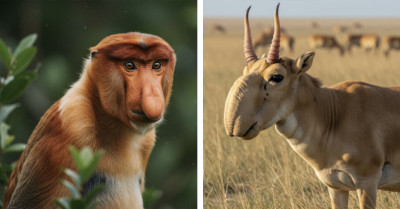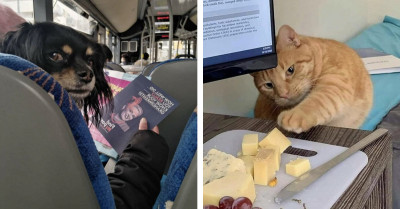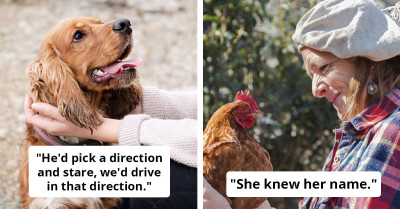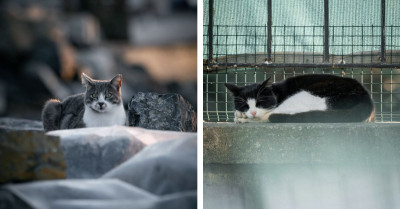Cats Are Basically Alien Invaders, And We Have The Science To Prove It (Sort Of)
Cats have always had a mysterious vibe, like they know something we don’t. With their glowing eyes, silent movements, and uncanny ability to appear out of nowhere, it’s no wonder some people think they’re not entirely of this Earth.
Believe it or not, scientists say cats have been around for millions of years—way before humans showed up. The earliest panther-like creatures roamed the planet 10 million years ago, which is basically ancient alien territory.
There’s even a subreddit called r/CatsAreAliens where people post photos of their cats doing bizarre, otherworldly things. Some look like they’re mid-transmission to their mothership, others just seem to defy the laws of physics.
But here’s where things get weird: in 2022, the Polish Academy of Sciences officially classified domestic cats as an “invasive alien species.” No, not because they’re from Mars—but because they’re not native to Europe and they’re causing serious damage to local wildlife.
One Polish biologist, Wojciech Solarz, argued that cats kill around 140 million birds in Poland every year. That’s not just a few feathers—it’s a full-blown ecological crisis.
Globally, the numbers are even more jaw-dropping. The U.S. Department of Agriculture estimates that free-ranging and feral cats are responsible for the deaths of up to 4 billion birds and 22 billion mammals annually.
And while cats were originally domesticated to help control rodent populations, they’re not actually that great at it. In one Brooklyn study, cats chased rats but only managed to kill two, in total.
1. Energy loading.

2. Don’t let that face fool you.

3. Small feet, big energy.
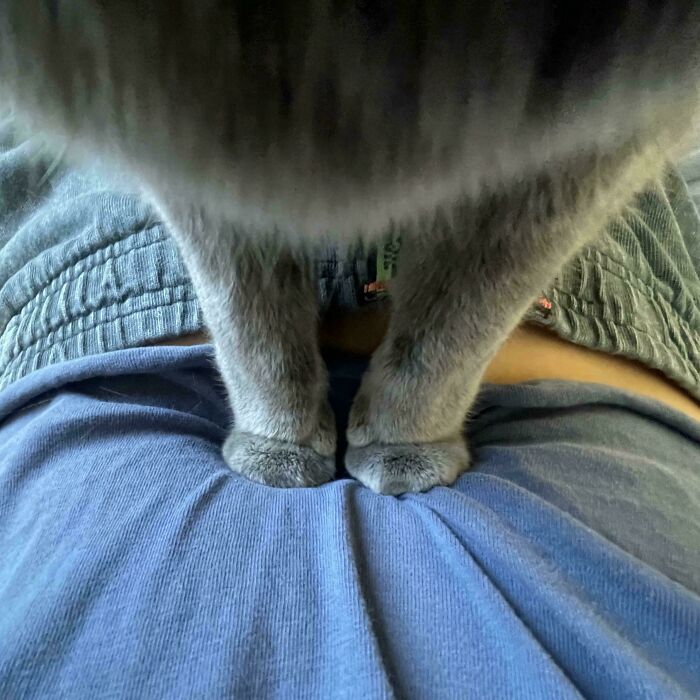
Behavioral ecologist Dr. John Bradshaw, author of 'Cat Sense,' argues that domestic cats are not just pets but complex creatures with distinct evolutionary traits. He explains that cats possess behaviors reminiscent of wild felines, such as hunting and territoriality, creating an almost alien presence in our homes.
This duality might be why they can be perceived as enigmatic. Understanding these instincts can enhance our interactions with them, fostering a deeper bond. Bradshaw suggests observing your cat's natural behaviors to provide an enriching environment that aligns with their instincts.
4. Two heads, zero thoughts.
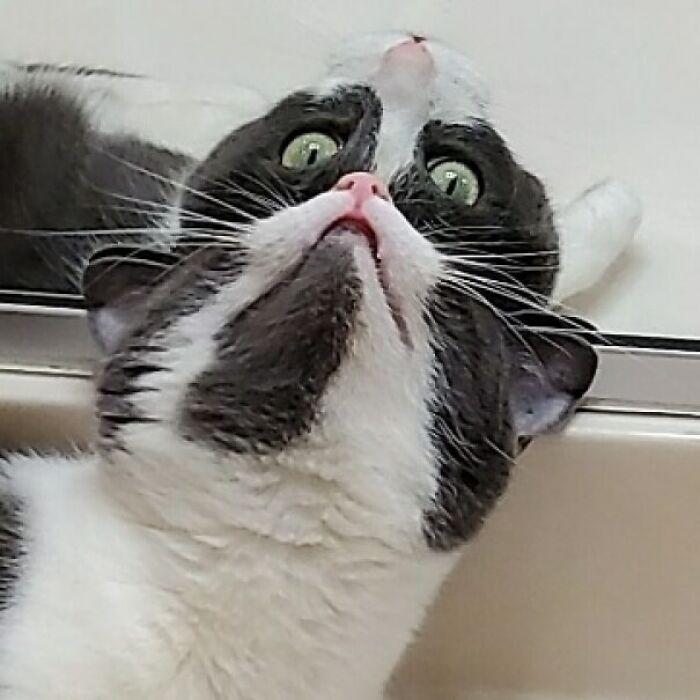
Globally, the numbers are even more jaw-dropping. The U.S. Department of Agriculture estimates that free-ranging and feral cats are responsible for the deaths of up to 4 billion birds and 22 billion mammals annually.
And while cats were originally domesticated to help control rodent populations, they’re not actually that great at it. In one Brooklyn study, cats chased rats but only managed to kill two—total.
Another study in Baltimore found no link between the number of alley cats and the number of rats. Turns out, rats are just too big and mean for most cats to mess with.
As Scientific American put it, once a rat hits puberty, it’s basically a boss-level enemy for your average house cat. Researchers have even seen cats and rats peacefully sharing trash bags like it’s a weird urban truce.
But cats don’t just mess with rodents—they’ve been linked to the extinction of entire species. In New Zealand, a lighthouse keeper’s cat named Tibbles is believed to have wiped out the Stephens Island wren, a tiny flightless bird.
Historians think Tibbles may have been pregnant and started a mini feline colony that hunted the wrens to extinction. The bird also lost habitat due to human activity, but Tibbles definitely played her part.
5. "She's an angel."

6. Crystalline eyes locked on target.
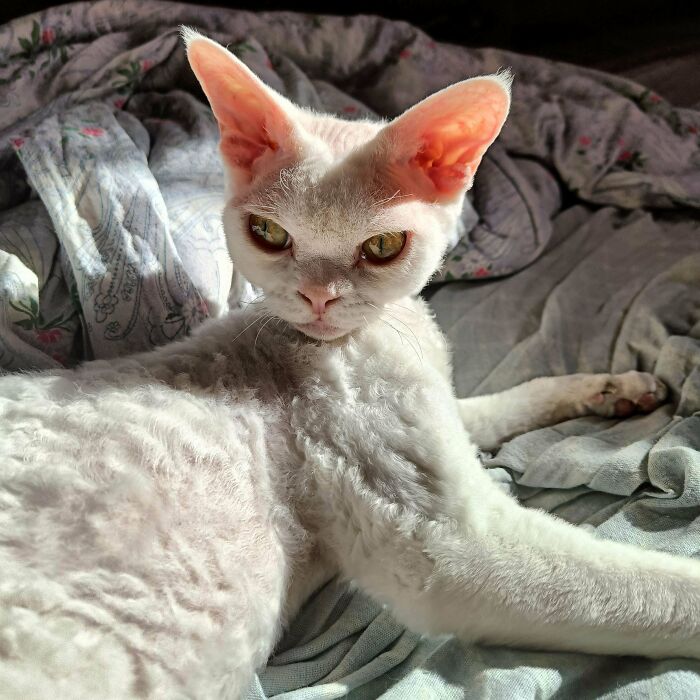
Dr. Susan McMillan, a veterinary behaviorist, emphasizes that the mysterious demeanor of cats is partly due to their independent nature. Unlike dogs, which have been selectively bred for companionship, cats have maintained their autonomy, making them seem more alien.
She suggests that owners can improve their relationship with their cats by providing interactive play and mental stimulation. Engaging your cat through puzzle toys or feather wands not only caters to their hunting instincts but also strengthens the human-animal bond.
7. Warning: Do NOT feed after midnight!
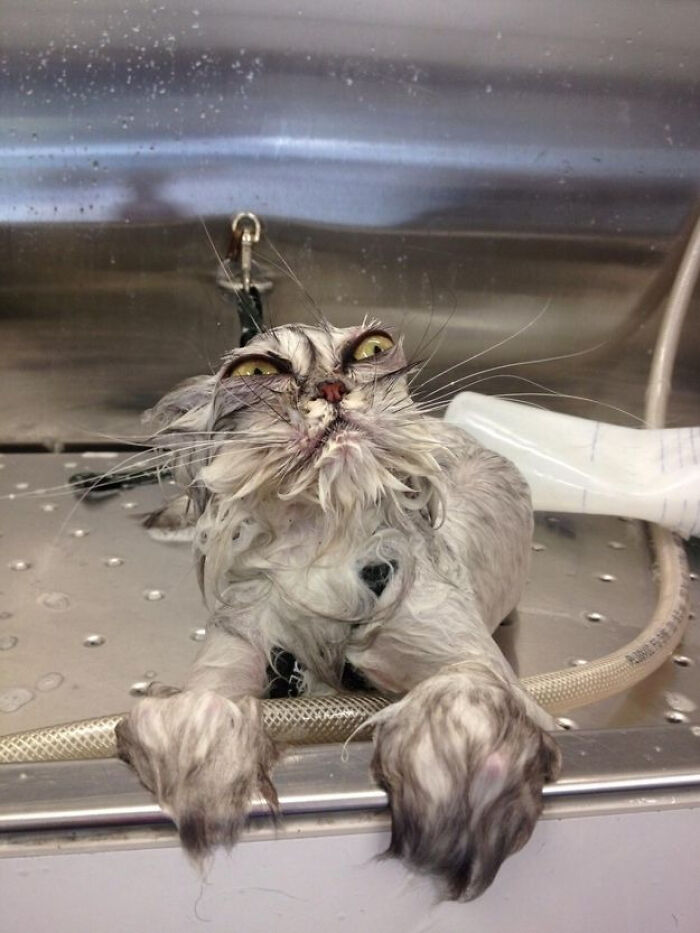
Australia has also suffered from feline destruction. Feral cats have contributed to the extinction of 27 native species, including the paradise parrot and several types of hopping mice.
Today, 124 animal species in Australia are endangered because of cats, and the government has launched aggressive programs to control feral populations. Cute as they are, cats are turning into tiny ecological wrecking balls.
8. One moment she’s purring, the next she’s summoning spirits.

9. She’s currently writing a strongly worded Yelp review in her head.
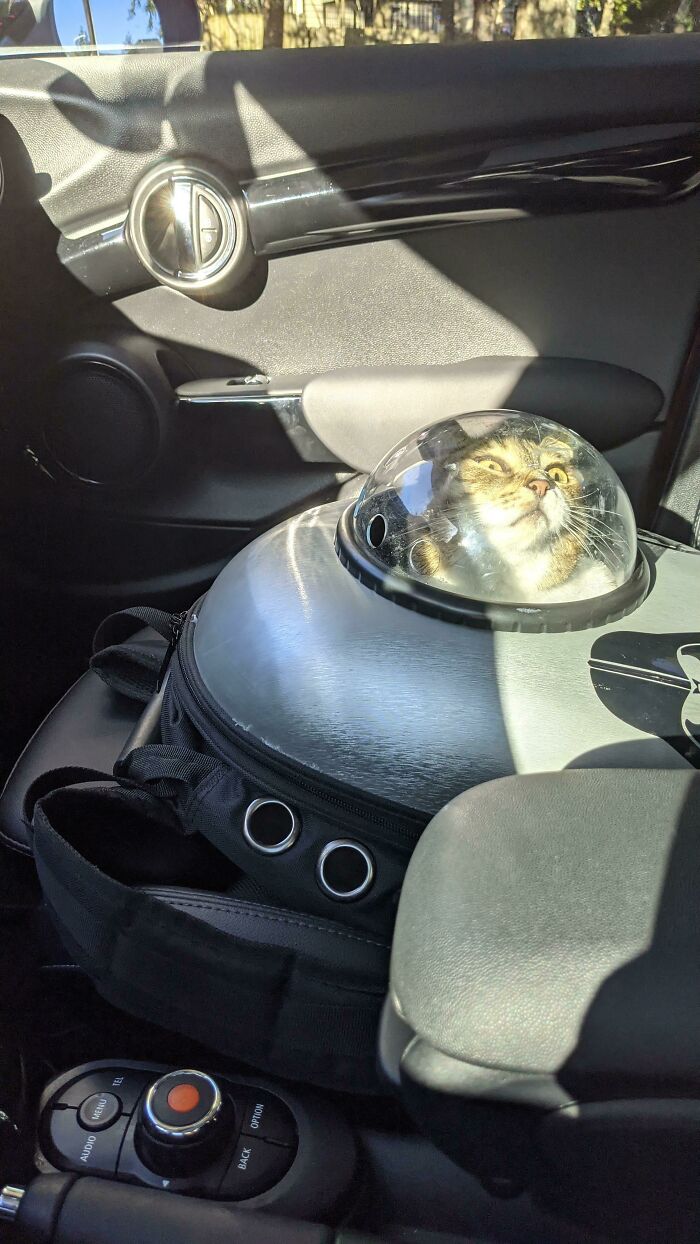
The Enigmatic Nature of Cats
According to Dr. John Bradshaw, the historical relationship between humans and cats is complex. He notes that while dogs were domesticated for specific tasks, cats essentially chose to live alongside humans, evolving to adapt to our environment.
This unique history contributes to their somewhat alien behavior. Bradshaw advocates for understanding a cat's body language and vocalizations to better decode their intentions, which can lead to a more harmonious cohabitation.
10. He's forgotten how to cat.
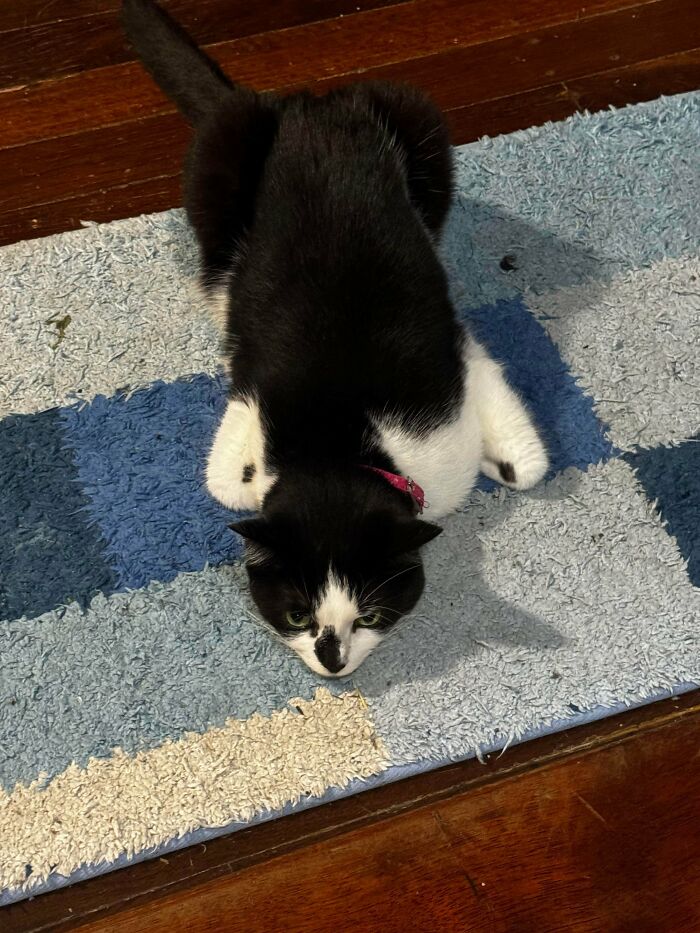
11. The baby has been judged. Verdict: acceptable.
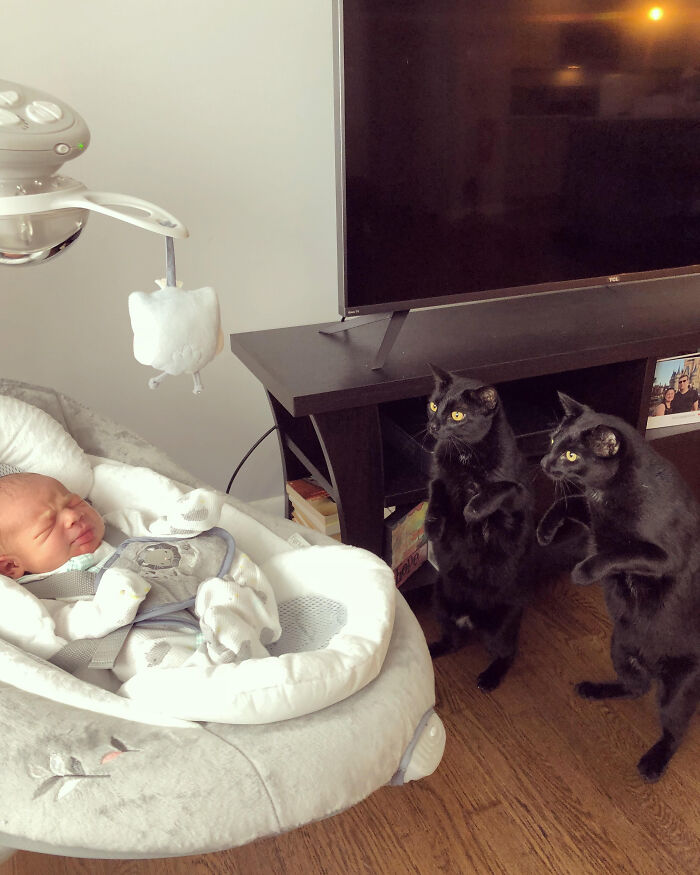
12. They speak to her. We just don’t understand the language.
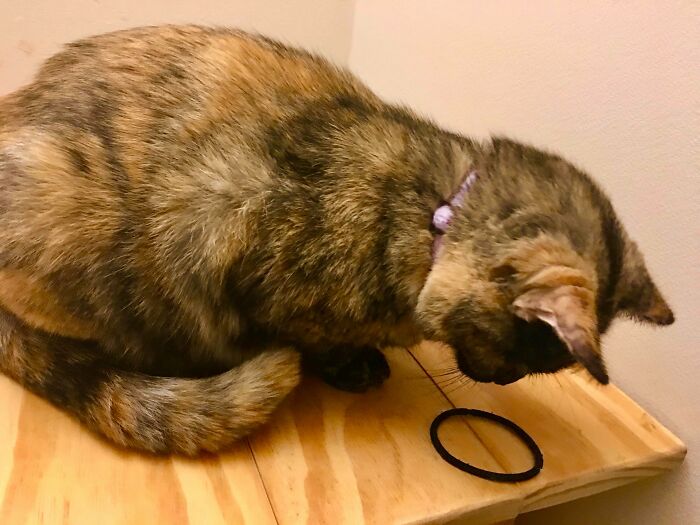
Dr. Peter Gray, an educational psychologist, highlights that the mysterious aura surrounding cats can stimulate curiosity and engagement in children. His research indicates that children often develop empathy and responsibility when caring for pets.
By involving kids in feeding and playtime, they learn valuable life skills. Parents can enhance this experience by encouraging children to observe their cat’s behaviors, fostering a deeper understanding of animal needs and emotions.
13. Alien lifeform detected. Cuteness levels: off the charts.
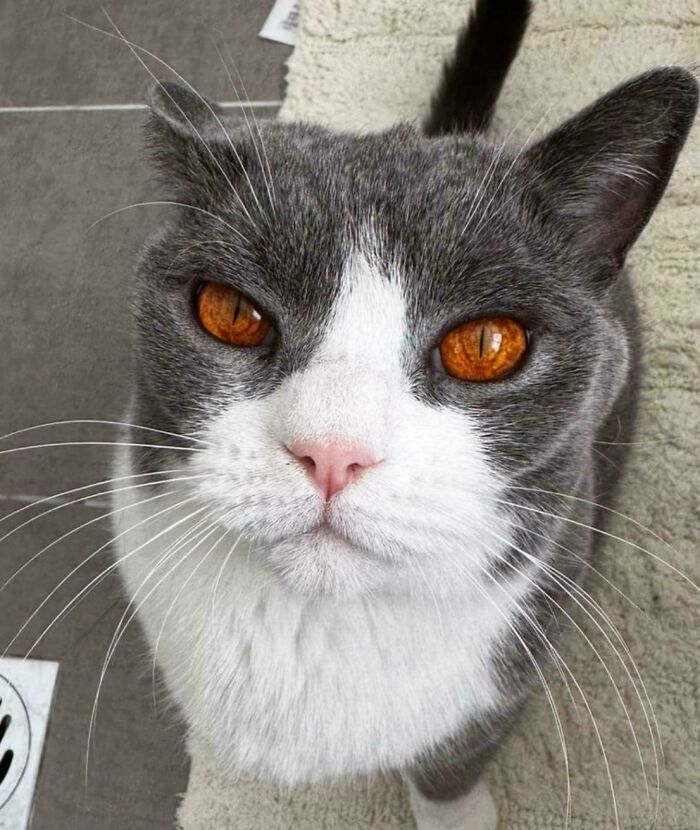
14. Not sure what’s happening, but they’re clearly chosen ones.
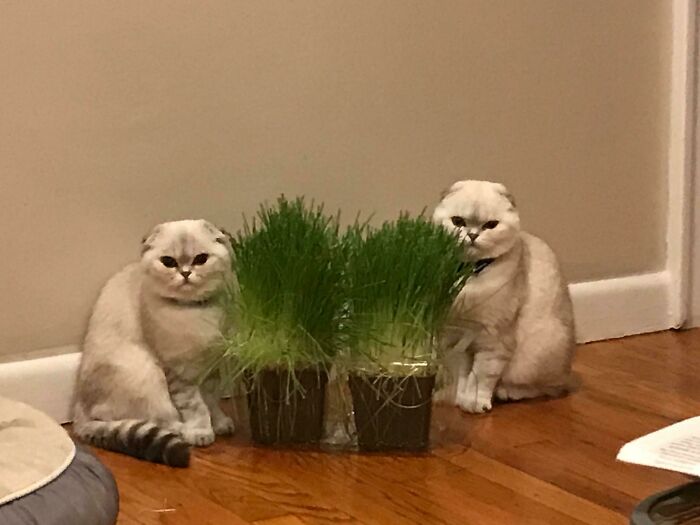
15. Power surge detected. Cat now controls the grid.

Understanding Cat Behavior
Dr. Mikel Delgado, a cat behavior consultant, highlights that understanding feline body language is integral for cat owners. Distinguishing between signs of affection and discomfort can prevent misunderstandings that lead to behavioral issues.
Delgado suggests investing time in learning about cat behavior through resources like books or workshops. This knowledge empowers owners to create a safer and more comfortable environment for their feline companions, bridging the gap between their alien-like behaviors and human expectations.
16. Stop, he's even green!
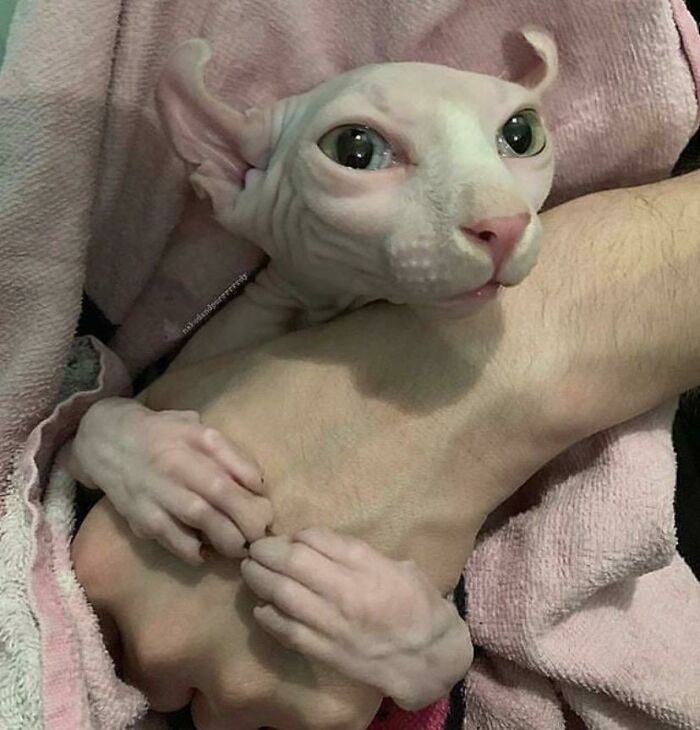
17. Behold, the Mothership!
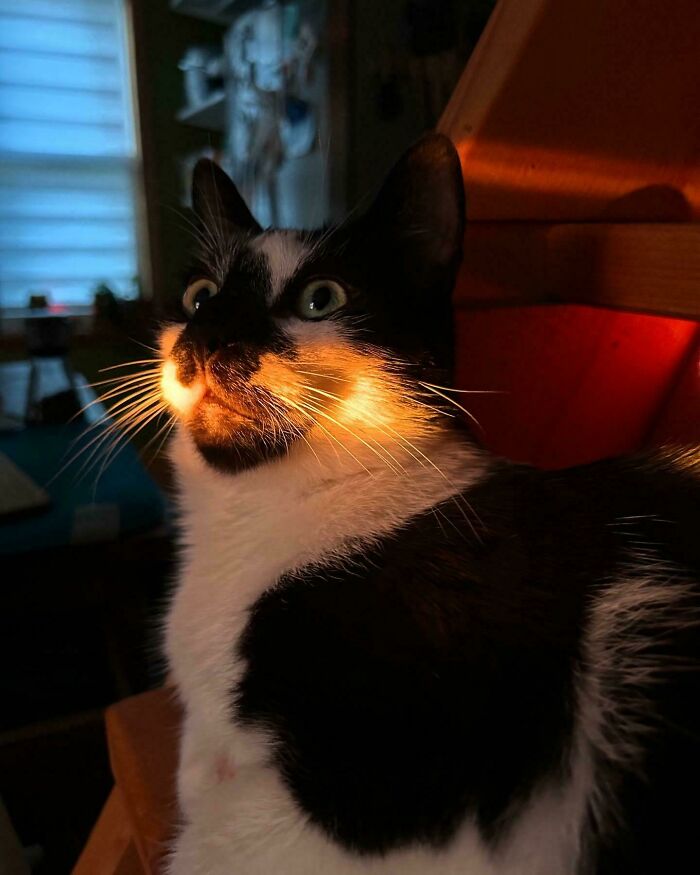
18. Caught mid-ritual. I wasn’t supposed to see this.
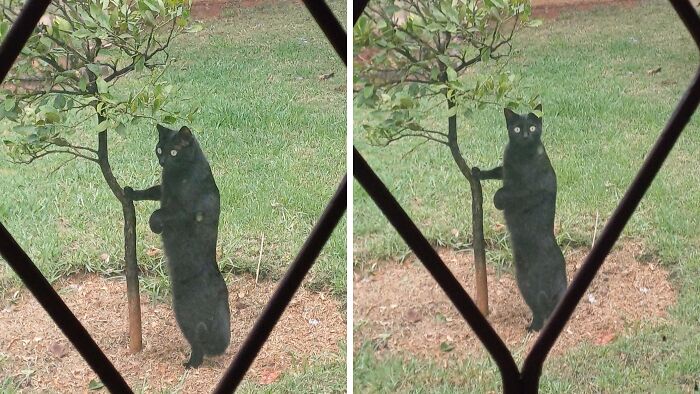
Dr. Karen Becker, a proactive and integrative veterinarian, emphasizes that our perception of cats as 'alien invaders' might stem from their unique social structure. Unlike dogs, cats are solitary hunters, and their interactions can often seem detached.
To nurture a stronger bond, Becker recommends creating a safe, enriched environment with vertical spaces and hiding spots. This allows cats to express their natural instincts while feeling secure, helping to diminish any feelings of alienation.
19. He is, in fact, a gremlin.
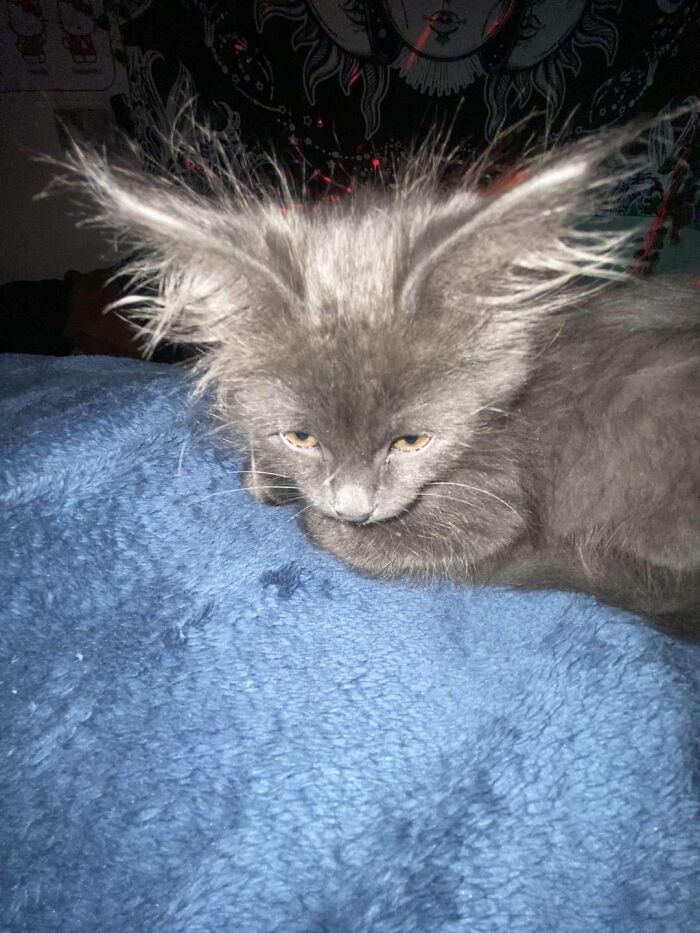
20. Beamed down straight into my heart.
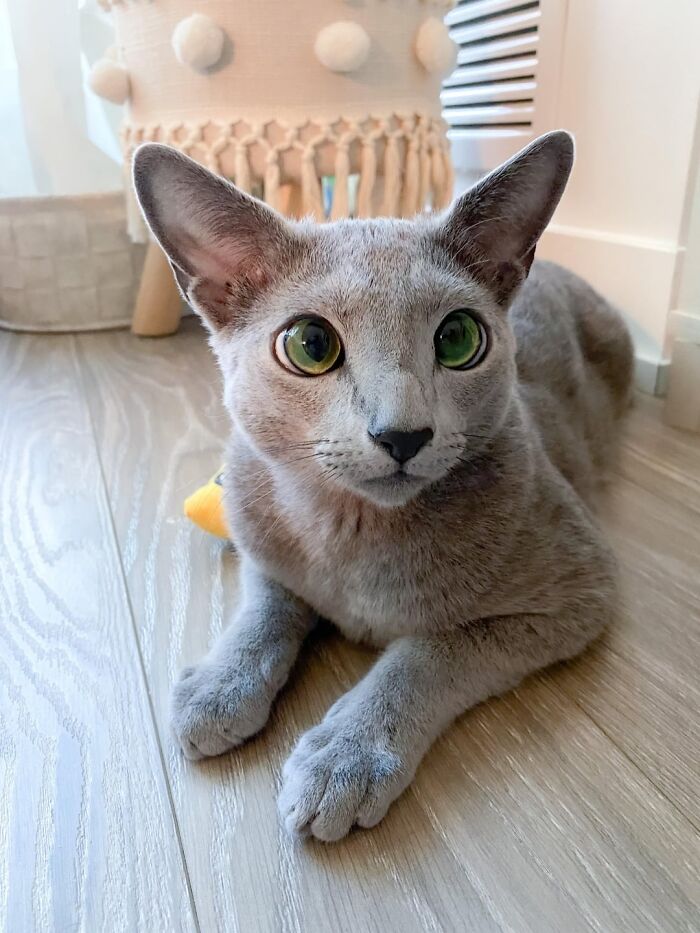
21. She’s tuned into a frequency we’ll never understand.

Cats and Their Ancient Roots
As Dr. Barbara J. King, a biological anthropologist, points out, understanding the evolutionary history of cats can explain some of their enigmatic behaviors. Cats have retained many traits from their wild ancestors, which can make them seem foreign to us.
King suggests that owners can enhance their relationship with their cats by respecting their natural instincts and providing opportunities for exploration and play. This fosters a sense of security and belonging, bridging the gap between their wild roots and domestic life.
22. Jazzypurrs is coming for you!
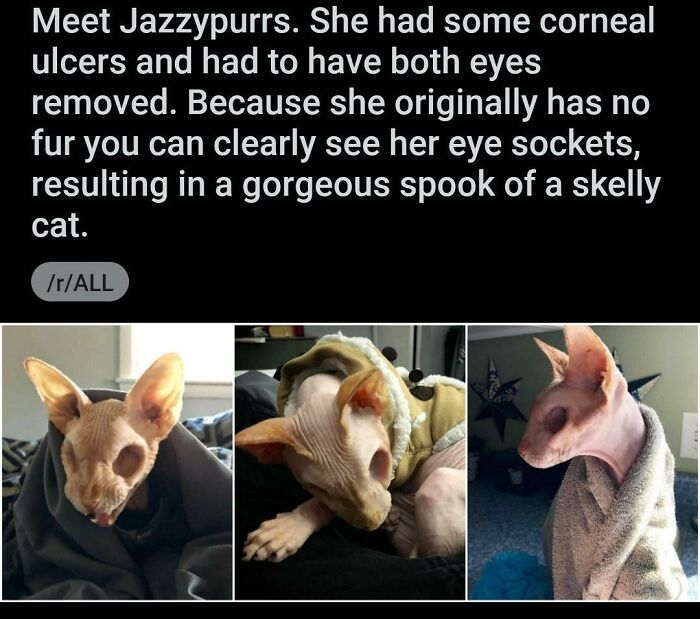
23. Her eyes may not see, but her soul scans the cosmos.
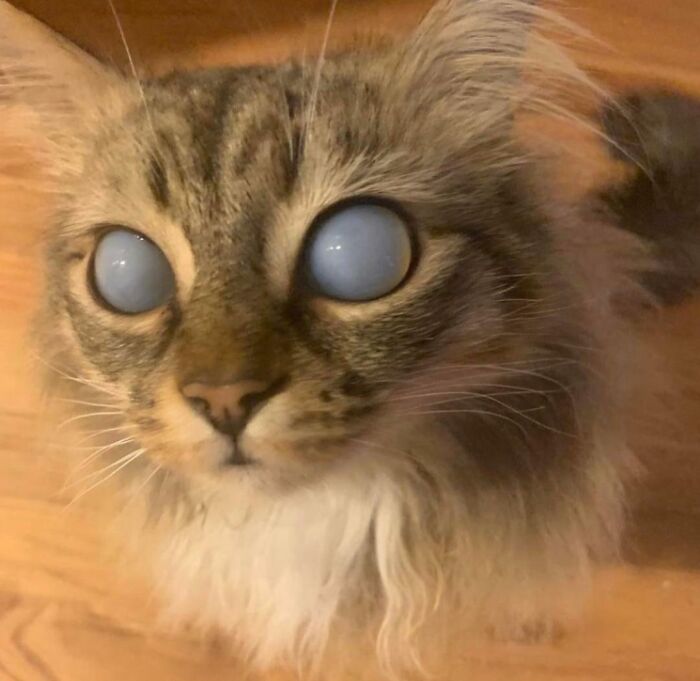
24. Covered in eyes, wings of judgment, and a tuxedo of righteousness.
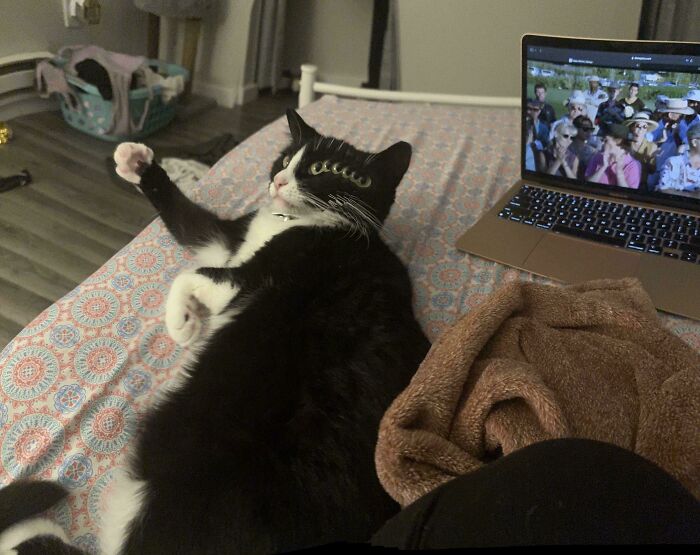
Animal behaviorist Dr. Lisa Radosta notes that the perception of cats as alien-like can be attributed to their unique communication styles. Unlike dogs, cats use a complex array of vocalizations, body language, and even scent marking to convey their feelings.
Radosta advises cat owners to pay close attention to their cat's signals, as this awareness can improve interactions and reduce behavioral issues. By learning to interpret these signals, owners can foster a deeper understanding and connection with their feline friends.
25. Yikes!
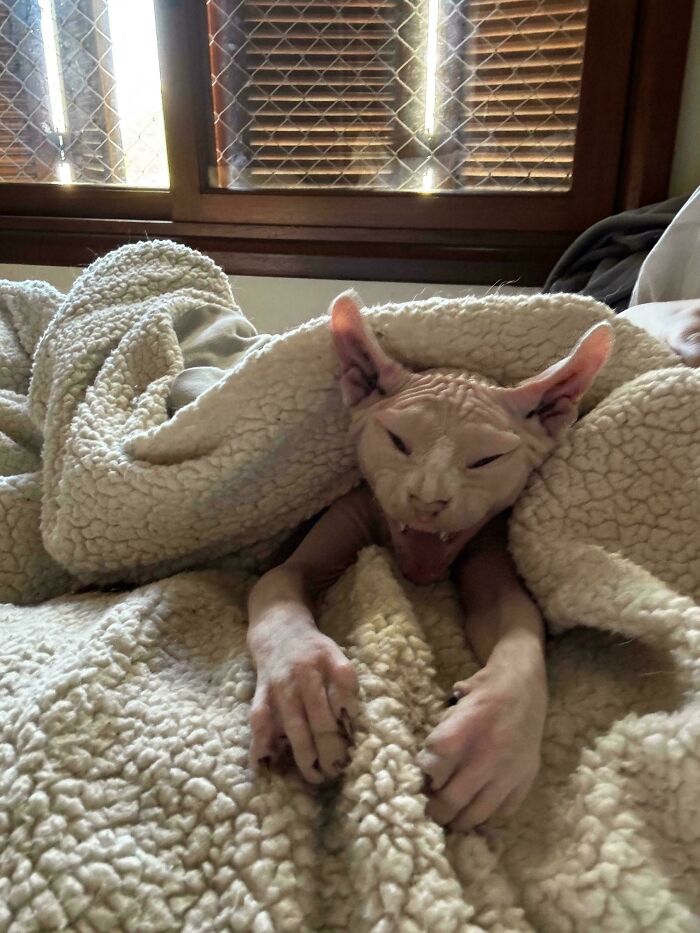
26. Blind Mary reporting from Planet Purrtron.
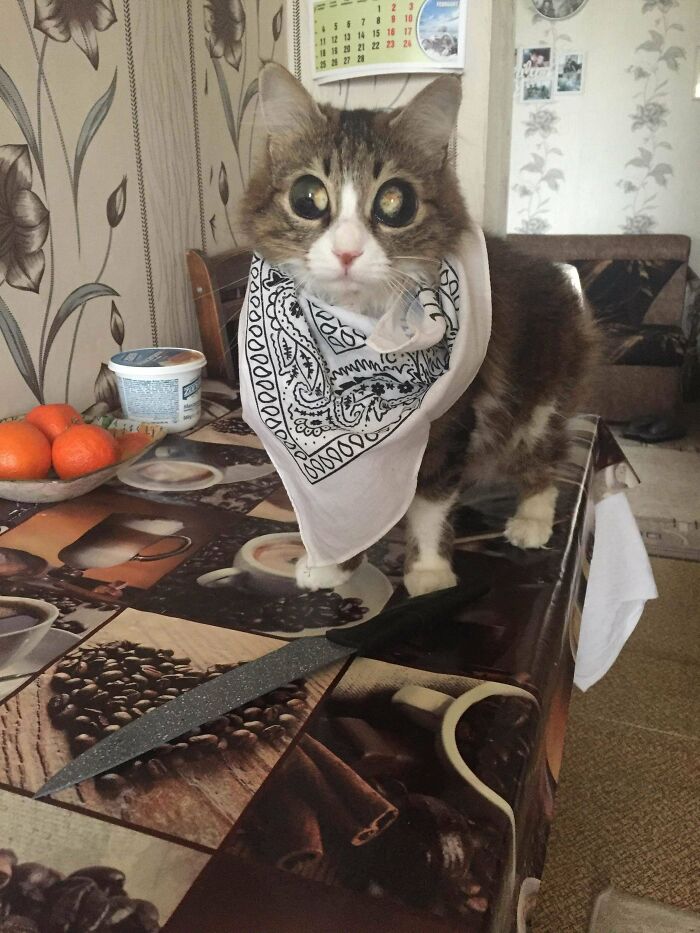
27. Ummm...
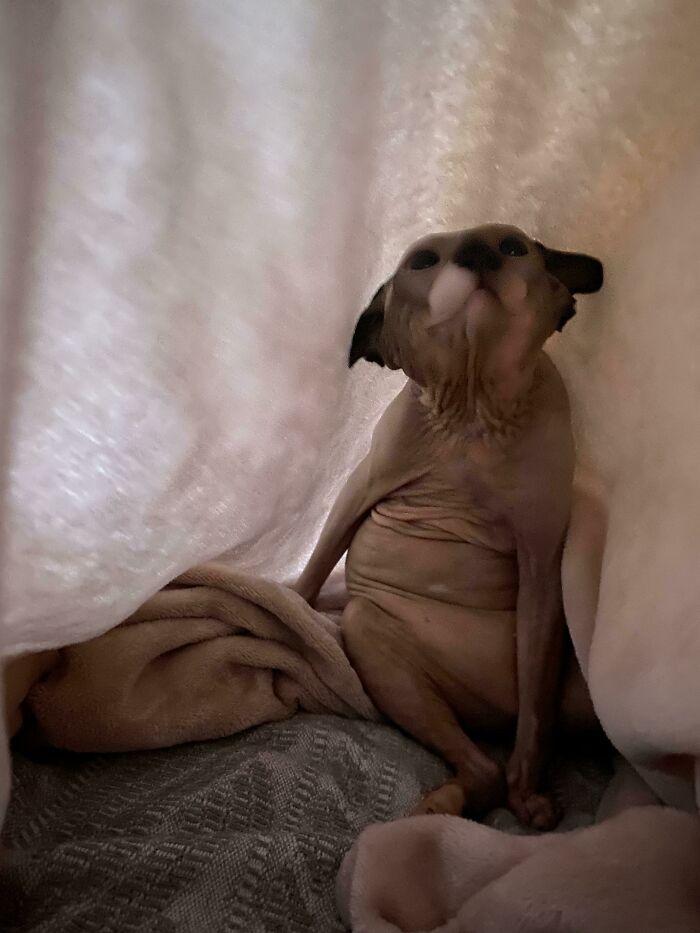
Creating a Feline-Friendly Environment
Dr. Tony Buffington, a veterinary nutritionist, emphasizes the importance of providing cats with environmental enrichment to reduce stress and promote well-being. He states that a stimulating environment caters to their natural instincts, helping them feel more at home.
Buffington recommends incorporating scratching posts, climbing trees, and interactive toys into your cat's space. These additions not only satisfy their natural hunting and climbing instincts but also create a more balanced and less alien-like existence for them.
28. I watch her like she’s a Netflix series.
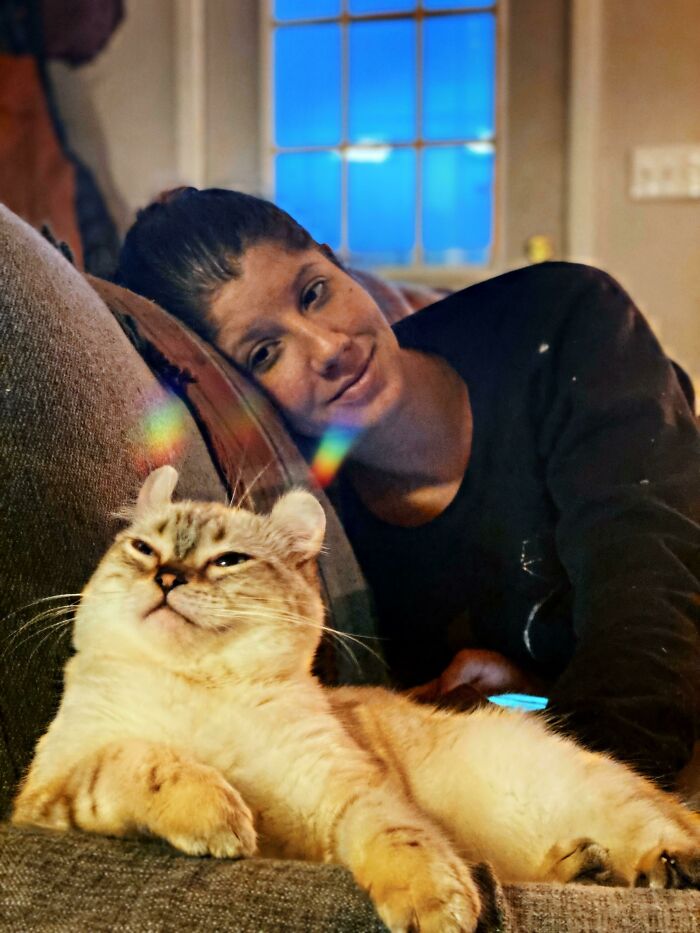
29. She’s buffering. Emotionally and cosmically.
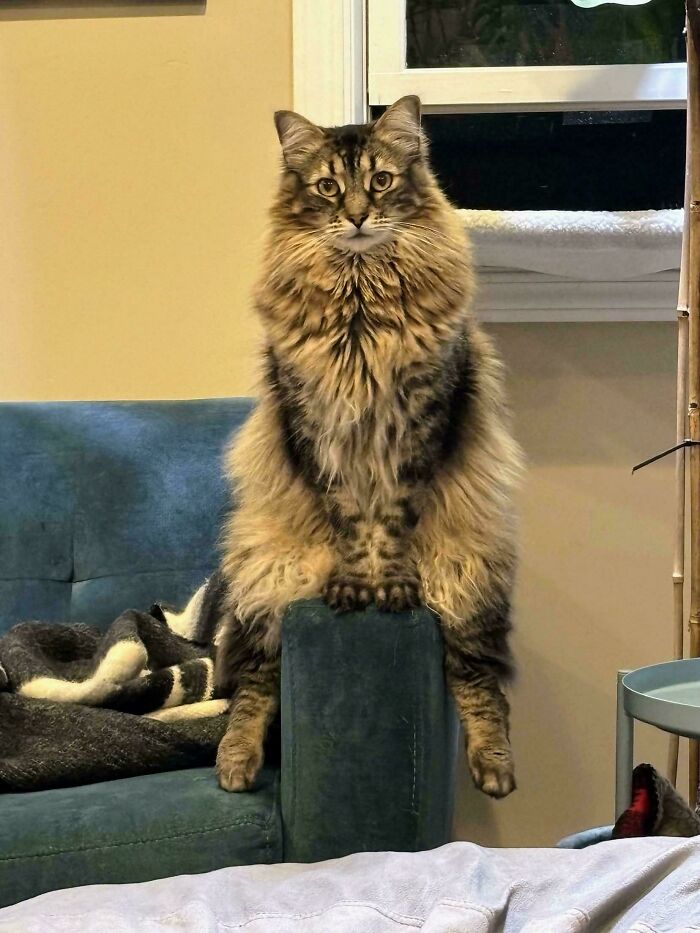
30. Okay, but wow!

Dr. Julie Buzby, a veterinarian and pet health advocate, highlights that the unique physical characteristics of cats—such as their retractable claws and flexible bodies—contribute to their 'alien' persona. These traits allow them to be stealthy and agile, enhancing their hunting skills.
To support their natural abilities, Buzby recommends regular exercise through interactive play. Engaging in playtime not only keeps cats fit but also strengthens the bond between owner and pet, transforming their alien-like behavior into a cherished companionship.
31. She's always watching.

32. Yes, you are being judged.
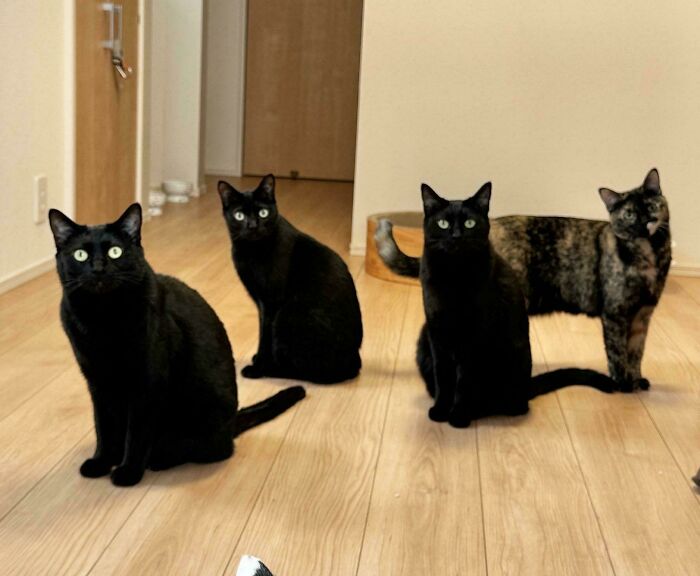
33. Cheeeessseeeee!
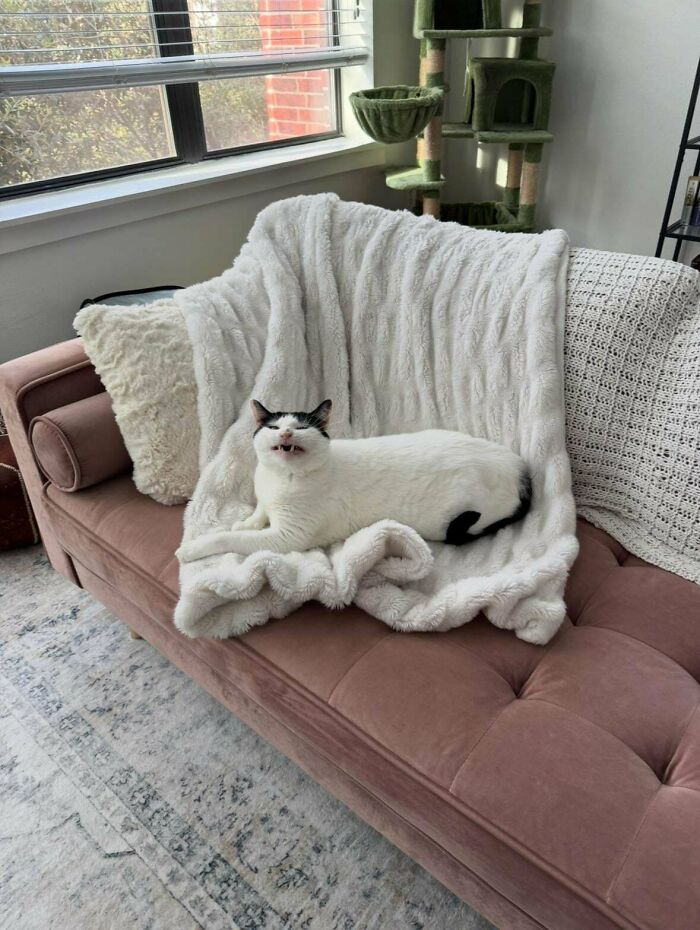
The Science of Cat Domestication
According to Dr. Eva Evans, an animal behavior expert, the domestication of cats is a fascinating process that began around 9,000 years ago. Unlike dogs, which were bred for specific roles, cats adapted to human environments primarily for mutual benefit.
This unique evolution can lead to behaviors that seem alien to us. Understanding their history can help owners appreciate their feline friends more and adjust their expectations, leading to a more harmonious coexistence.
34. This is not a request. It’s a decree.

35. Shhhhh... he's sleeping.
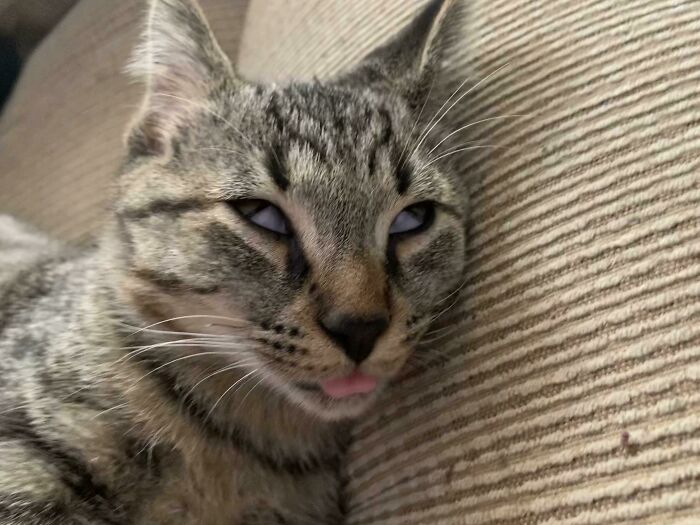
36. She’s just out here being her intergalactic self.
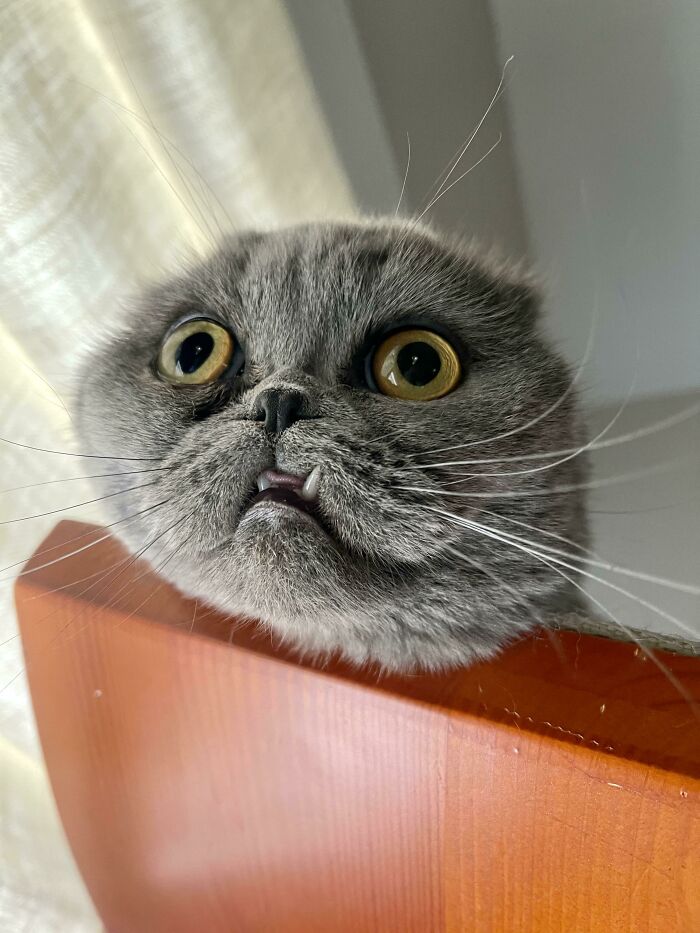
Dr. Jennifer Coates, a veterinary consultant, suggests that understanding the nutritional needs of cats is essential for their health and behavior. Cats are obligate carnivores, meaning their diet must consist primarily of meat.
Coates recommends that pet owners prioritize high-quality protein sources in their cat's diet. This not only supports their physical health but can also positively impact their behavior, making them feel more secure and less 'alien' in their domestic environment.
37. Two cats. One body. Infinite confusion.
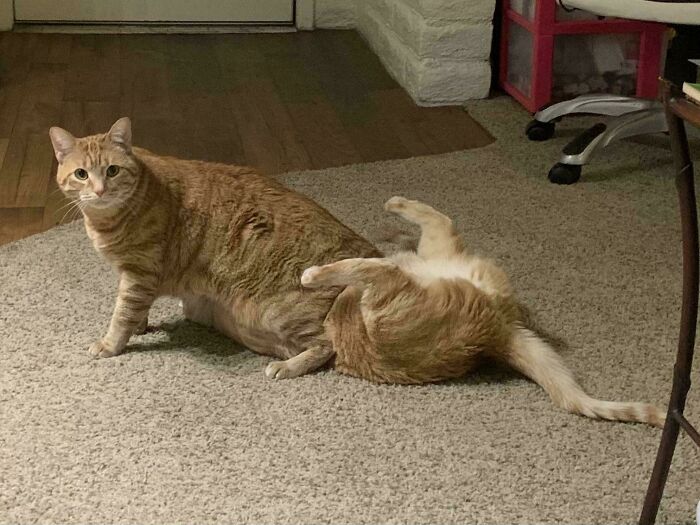
38. Twice the ears, double the judgment.

39. No comment necessary.

The Role of Play in Cat Behavior
Dr. Nicholas Dodman, a veterinary behaviorist, emphasizes the importance of play in a cat’s life. He notes that regular playtime can significantly reduce stress and anxiety, which may contribute to their seemingly alien behaviors.
Dodman encourages cat owners to set aside dedicated time for interactive play, using toys that mimic the movement of prey. This practice not only satisfies their hunting instincts but can also enhance the bond between cat and owner, turning alien invaders into cherished companions.
40. All hail the King!
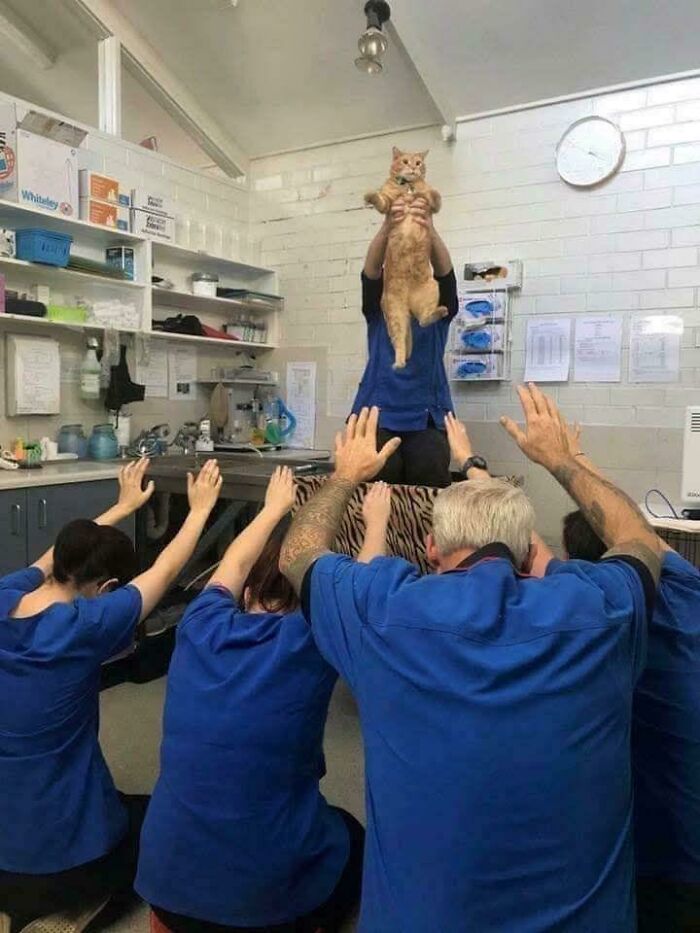
41. She's not from around here.

42. Those eyes just judged my entire life… and they’re not wrong.
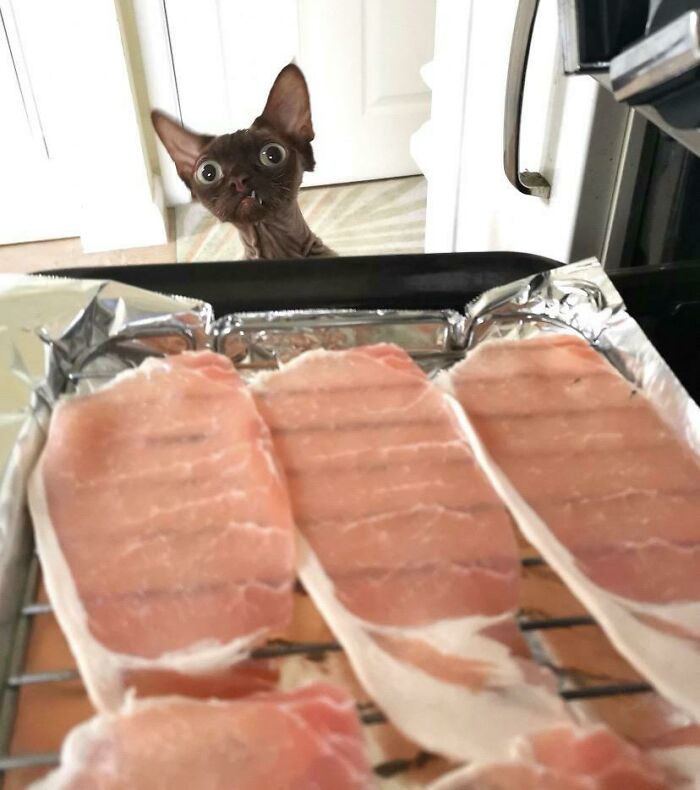
Dr. Linda P. Case, a canine and feline nutritionist, believes that a cat's diet plays a crucial role in their overall behavior. She emphasizes that a balanced diet can prevent issues such as aggression and anxiety, which may lead to alien-like behaviors.
Case recommends consulting with a veterinarian to tailor a diet that meets individual needs, ensuring that cats receive the right nutrients for optimal health and behavior. This proactive approach can help make cats feel more at ease in their surroundings.
43. Not sure if it’s a cat or a cosmic overlord in disguise.

44. Touchdown complete. Zen mode activated.
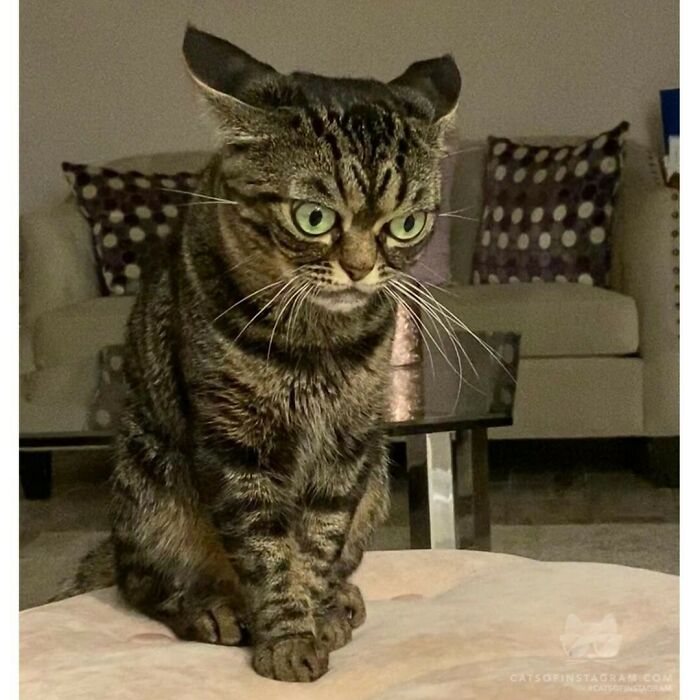
45. Alien? Possessed? Still demands dinner at 5.
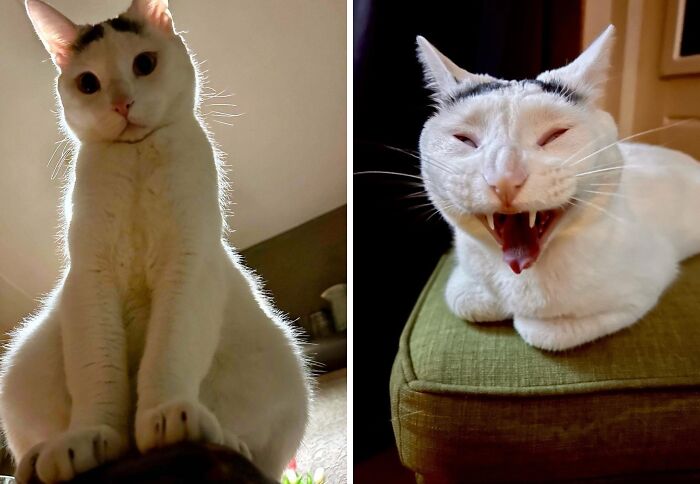
Feline Communication and Connection
Dr. Marge Rogers, a feline behavior specialist, stresses that understanding feline communication can bridge the gap between humans and cats. She explains that cats communicate through vocalizations, body language, and even scent marking, which can often be misinterpreted by owners.
Rogers encourages cat owners to learn about these signals to enhance their relationship. By recognizing when a cat is happy or stressed, owners can respond accordingly, fostering a deeper connection and transforming the cat's seemingly alien behavior into a more relatable experience.
46. Beamed down for snacks. Stayed for the drama.
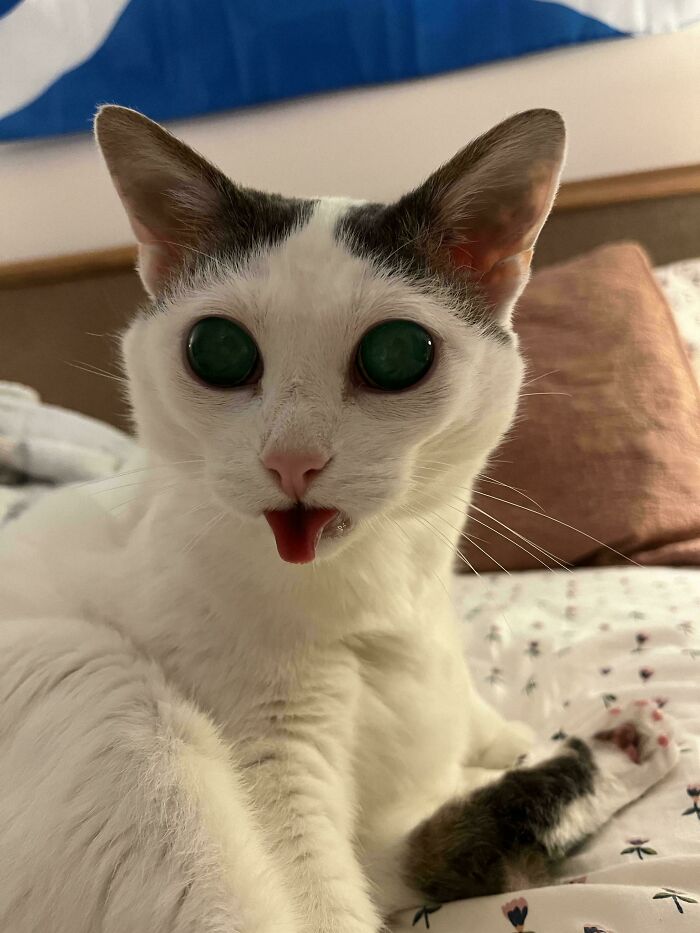
47. Transformation initiated. Please stand back and offer treats.
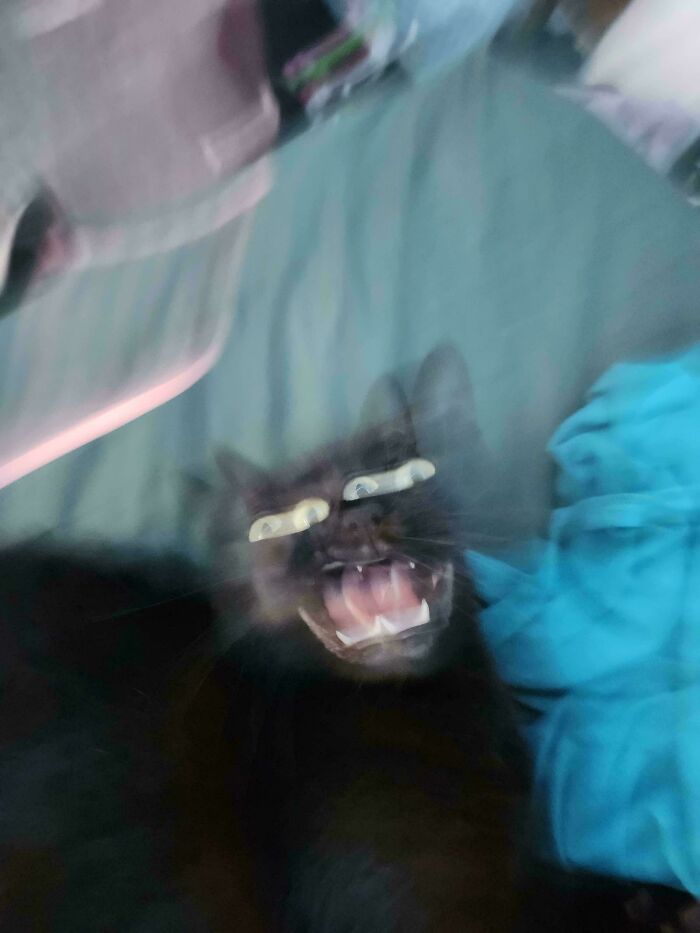
48. He will be served on a stick… with a side of judgment.
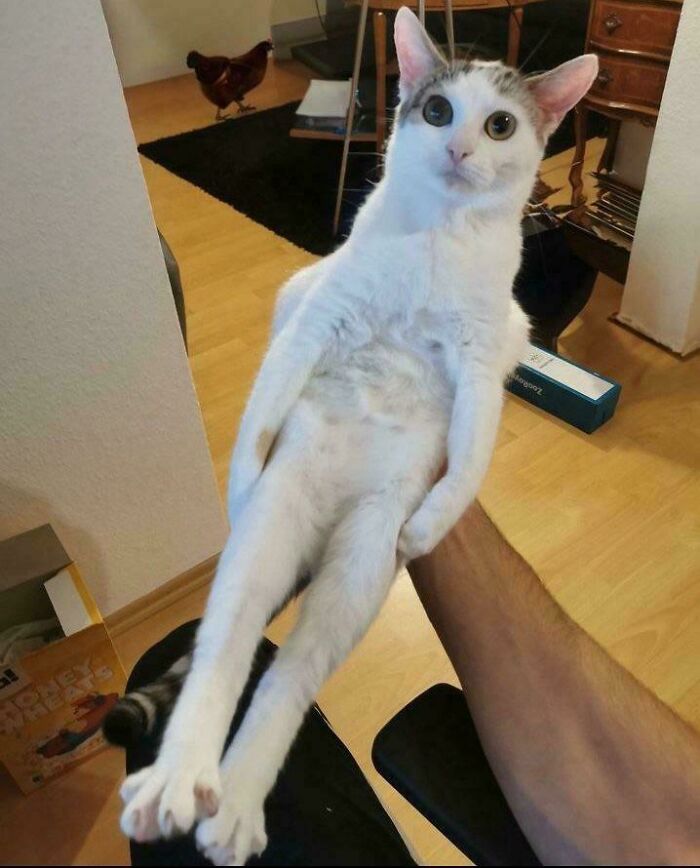
Dr. Richard G. Smith, a behavioral veterinarian, suggests that the perception of cats as alien invaders can stem from their solitary nature. Unlike pack animals, cats often prefer independence, which can be misread as aloofness.
To improve this dynamic, Smith recommends creating a safe space where cats can retreat when feeling overwhelmed, allowing them to choose when to engage. This practice not only respects their nature but also encourages trust between the cat and owner, enhancing the overall relationship.
49. She's judging my sleep posture.
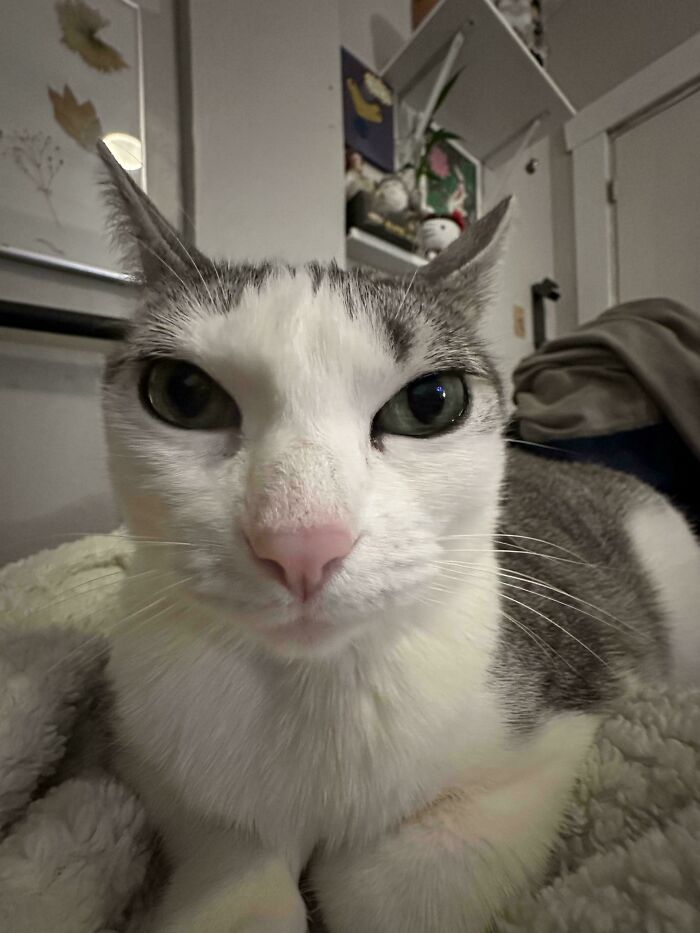
50. Now we know.

51. I think my cat is leaking.
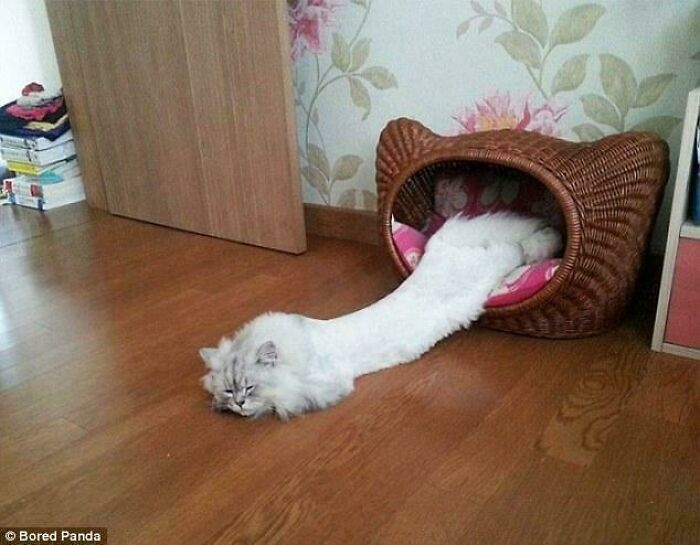
Understanding Their Unique Needs
Dr. Liza Schneider, a cat behaviorist, emphasizes the importance of recognizing the unique social needs of cats. Many owners mistakenly believe that cats do not require social interaction, which can lead to behavioral problems.
Schneider advocates for regular interaction and playtime to prevent feelings of isolation. Engaging in activities that simulate hunting can fulfill their instincts and foster a stronger bond between cats and their owners, making them feel less alien in their environment.
52. Mom's got a boo boo.
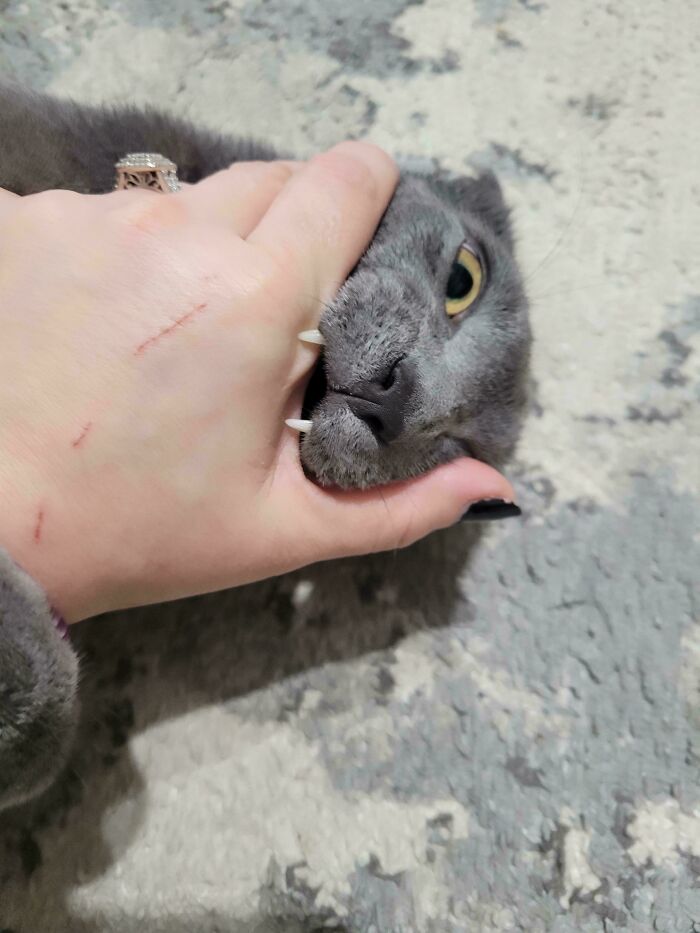
53. He’s staring at me like I’m the last snack on Earth.
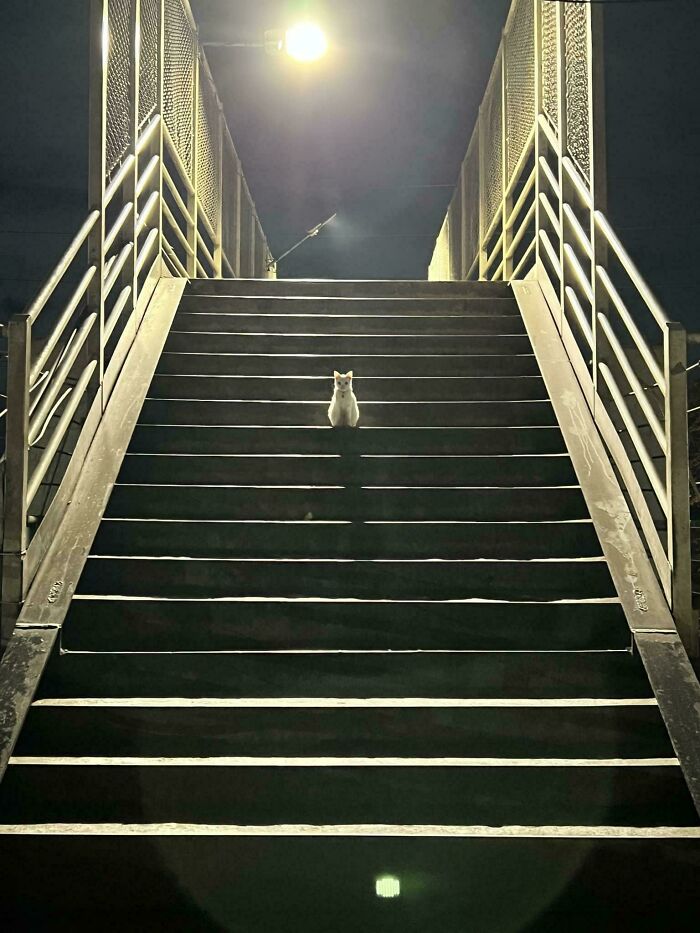
54. Cat x Hyena.

Dr. W. Jean Dodds, a veterinary immunologist, highlights the importance of regular veterinary check-ups to ensure a cat’s well-being. Many behavioral issues can be linked to health problems, which may contribute to their alien-like behavior.
Dodds recommends that cat owners schedule annual health assessments to monitor any changes and address potential issues early. By prioritizing their health, owners can create a supportive environment that promotes well-being and normal behavior.
55. She’s not staring into space. She’s communicating with it.
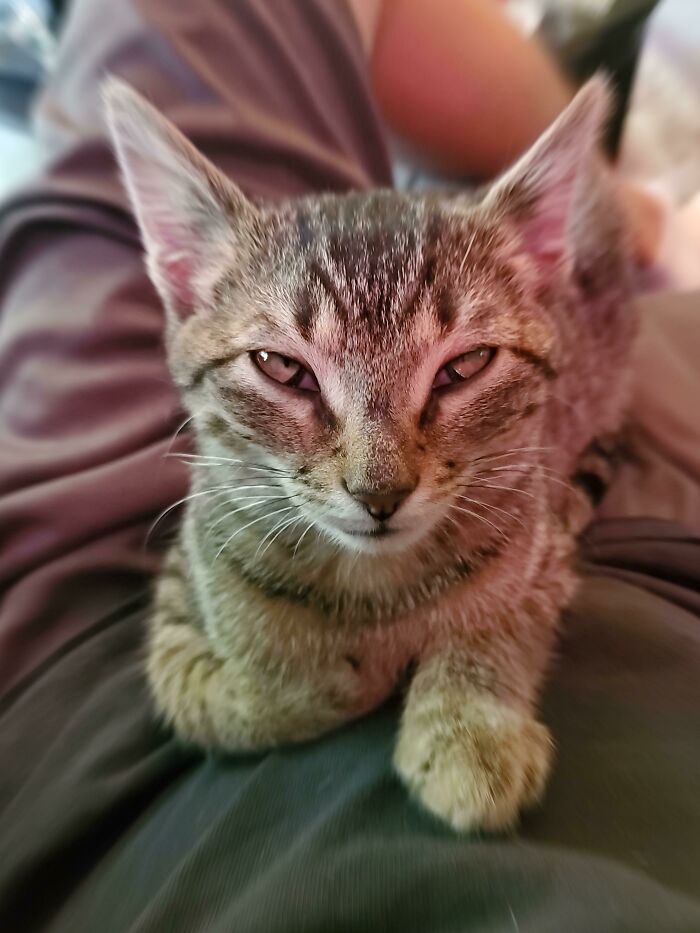
56. She’s practicing Earth emotions. It’s… unsettling.
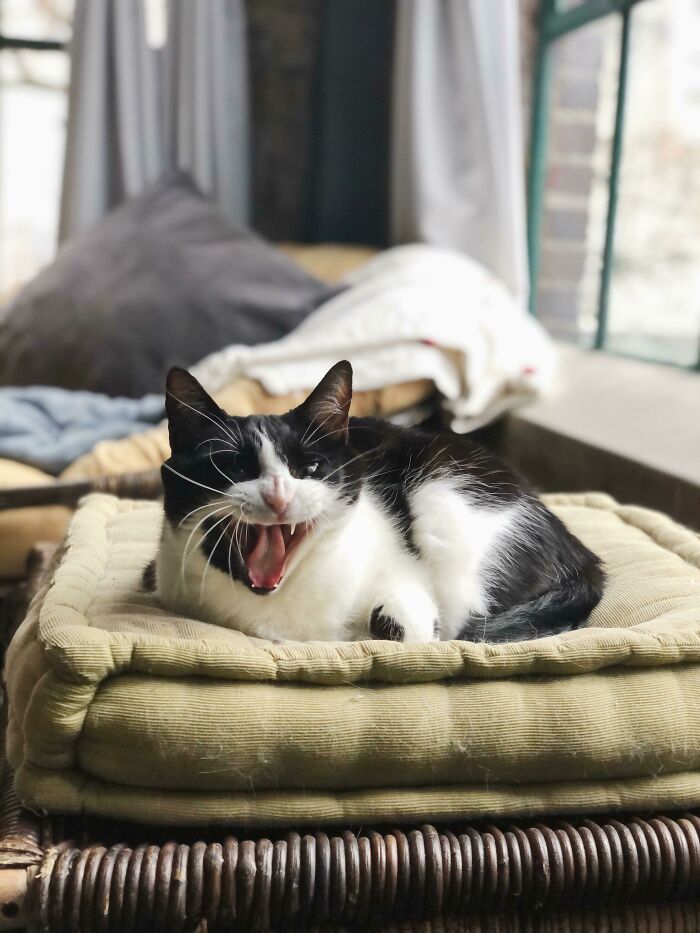
57. He’s wearing fur, but the vibe is pure spacecraft.

The Importance of Routine
Dr. Karen Overall, a veterinary behaviorist, emphasizes that establishing a routine can greatly benefit a cat's emotional health. Cats thrive on predictability, and a consistent schedule can reduce stress and anxiety.
Overall suggests maintaining regular feeding, play, and grooming routines to provide a sense of security. This structure not only helps cats feel more at home but also allows owners to better understand their behaviors, making interactions more harmonious.
58. "You shall not pass!"
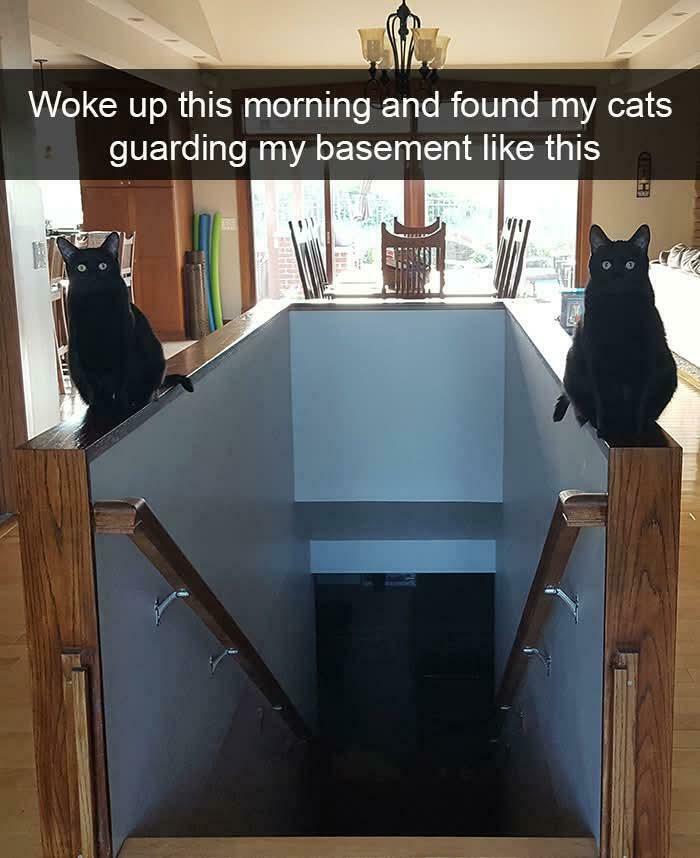
59. Cat comet strikes again.
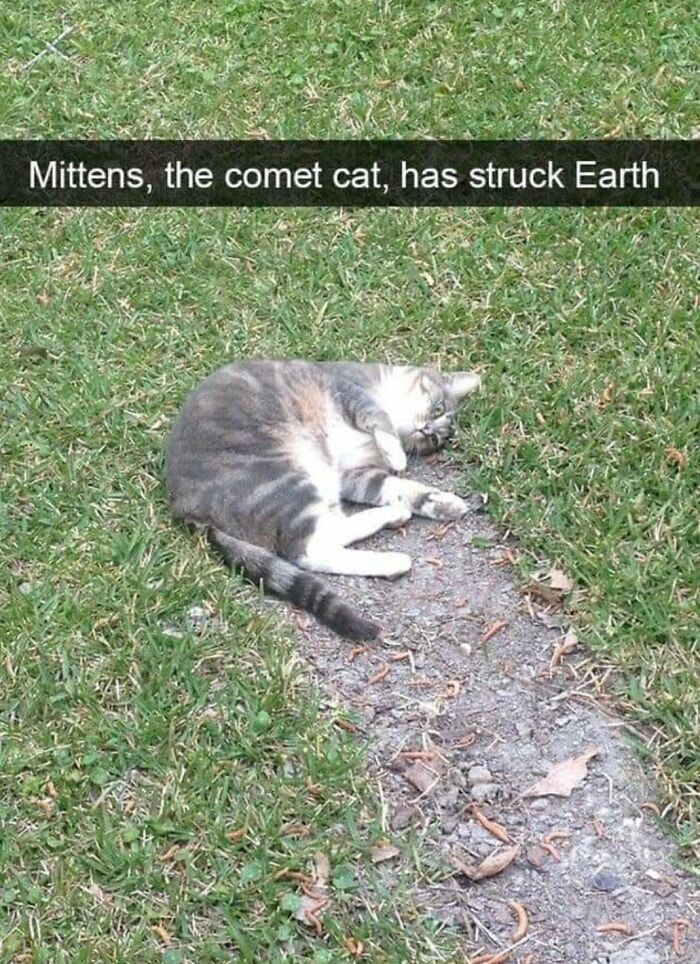
60. He watched me leave… and began plotting my emotional punishment.
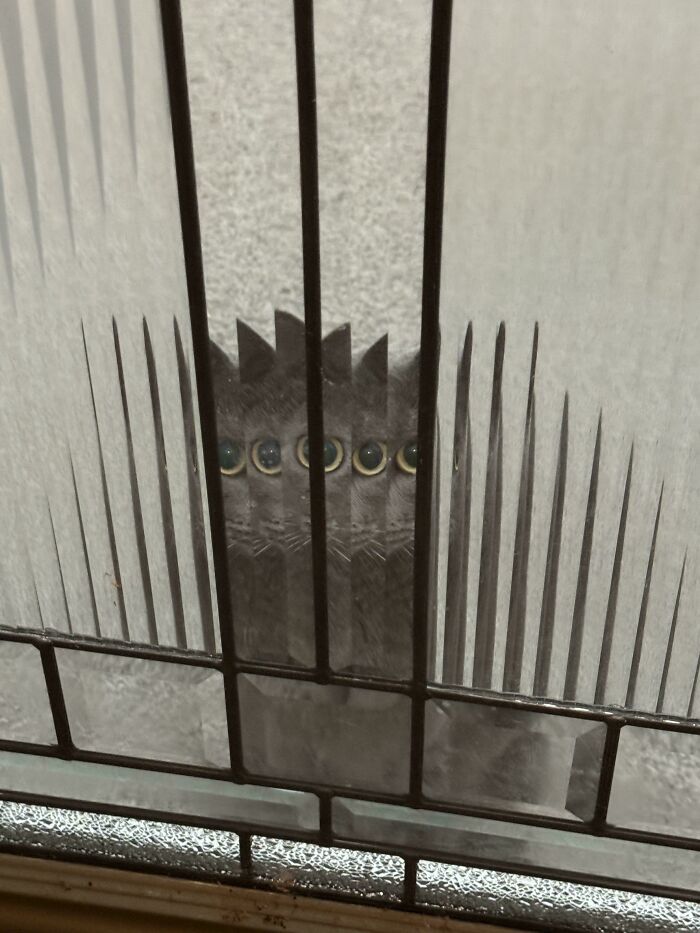
Dr. Sophia Yin, a veterinarian and animal behaviorist, highlights the significance of positive reinforcement in training cats. Many owners resort to negative methods that can contribute to stress and alien behaviors.
Yin recommends using treats and praise to encourage desired behaviors, fostering a more positive relationship with cats. This approach not only improves behavior but also transforms the perception of cats from alien invaders to beloved companions.
61. It's bath time!
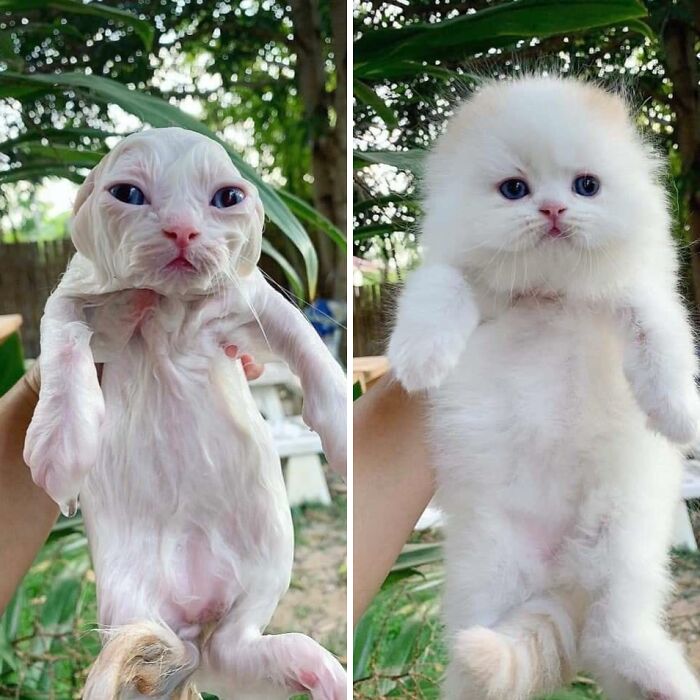
62. "I am not amused."

63. Just a floating head… and somehow still in charge.

64. "Paint me like one of your French girls."
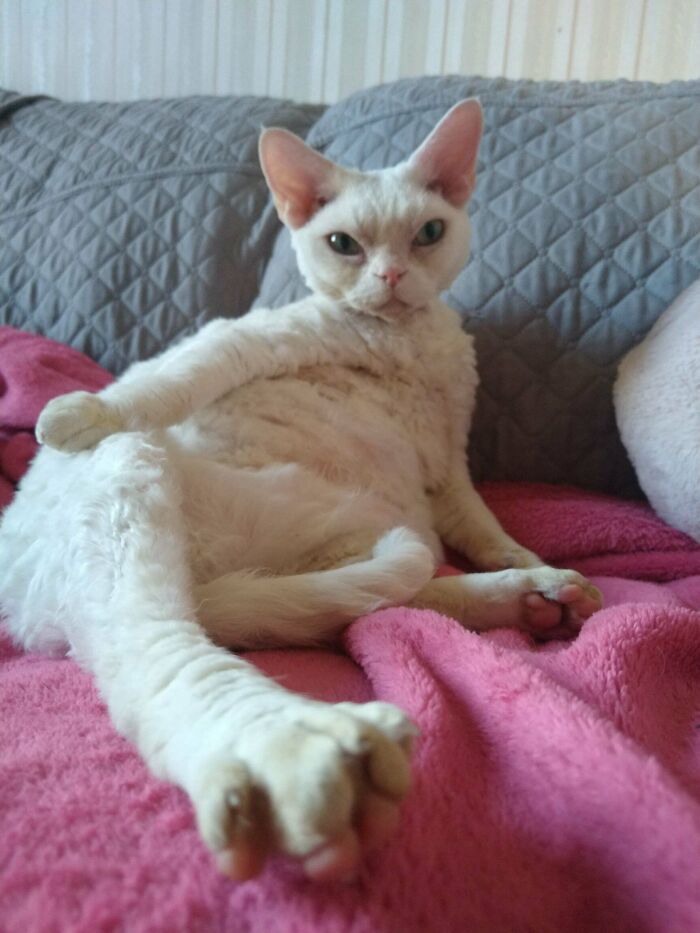
65. Not a cat. A deep-sea emissary with wet paws and secrets.
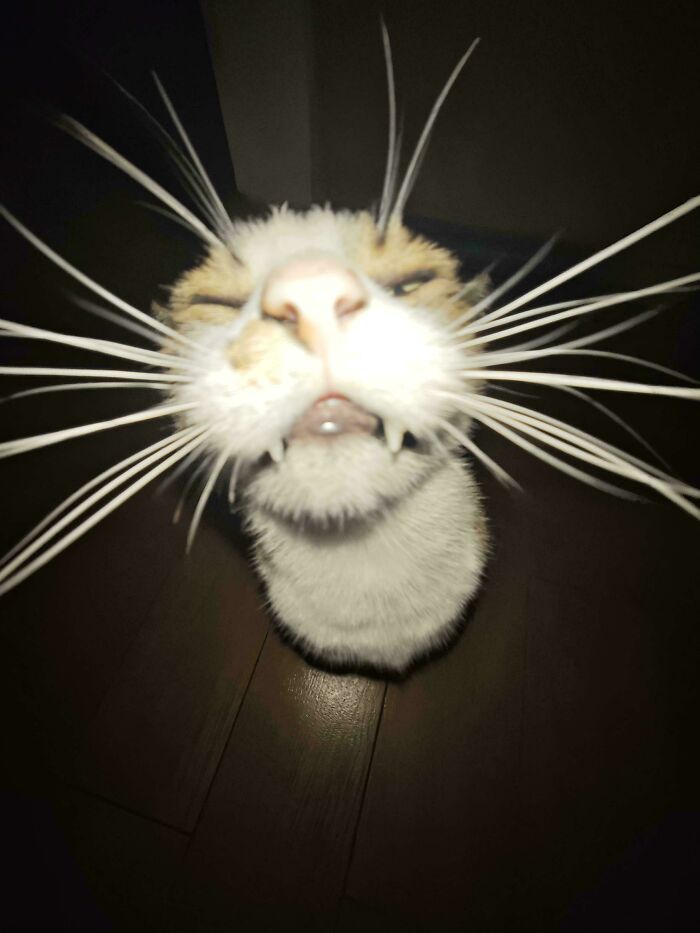
66. This isn’t a game. This is a full-scale interspecies operation.

67. Who needs a blanket?

68. His spacecraft has velvet seats and mood lighting.

69. Fresh is best.
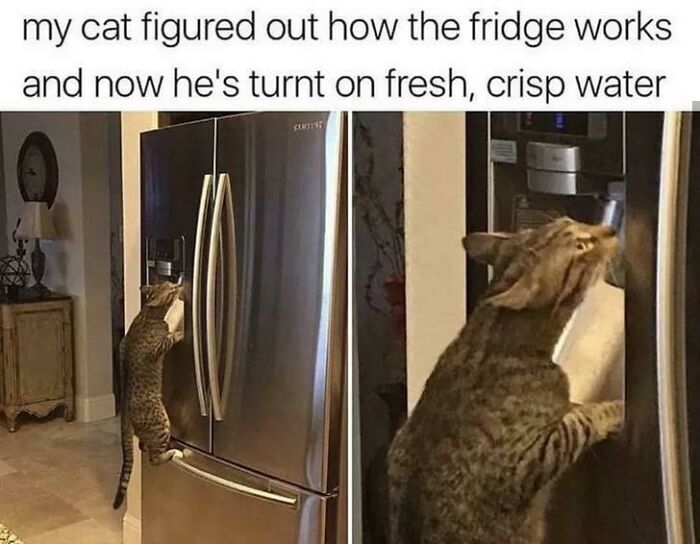
70. The mothership called. I’m not invited.
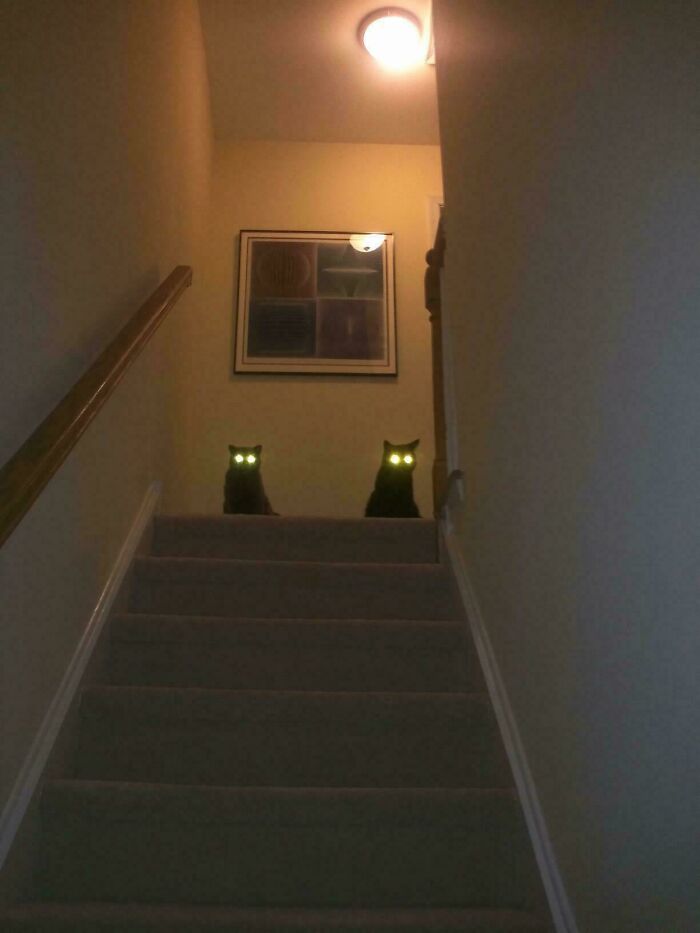
71. She’s in full alien mode. I’m in full retreat.
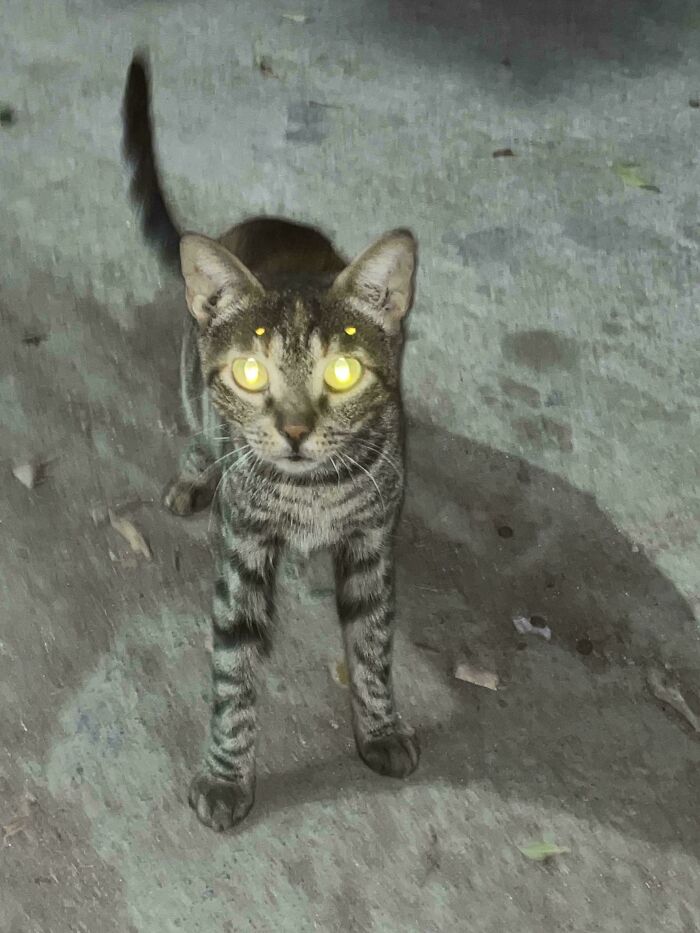
72. This GPS recalculates based on nap zones and snack stops.
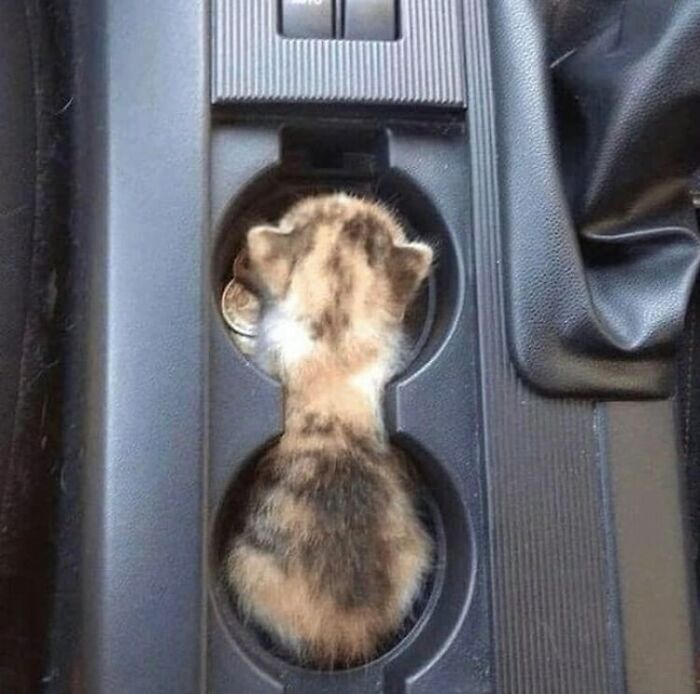
73. What is happening here?
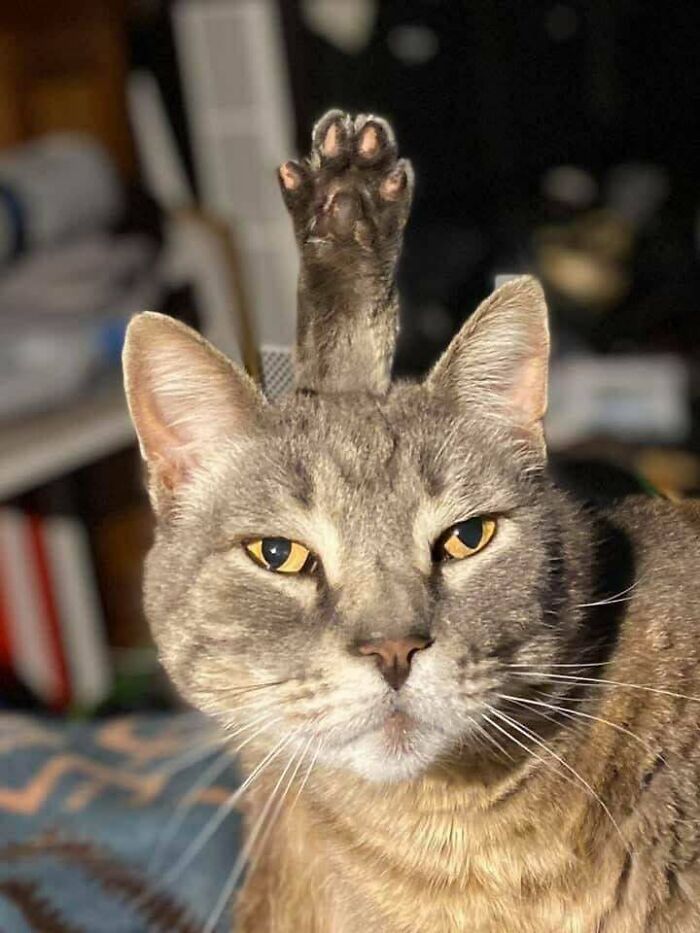
74. Signal lost. Sass levels critical.
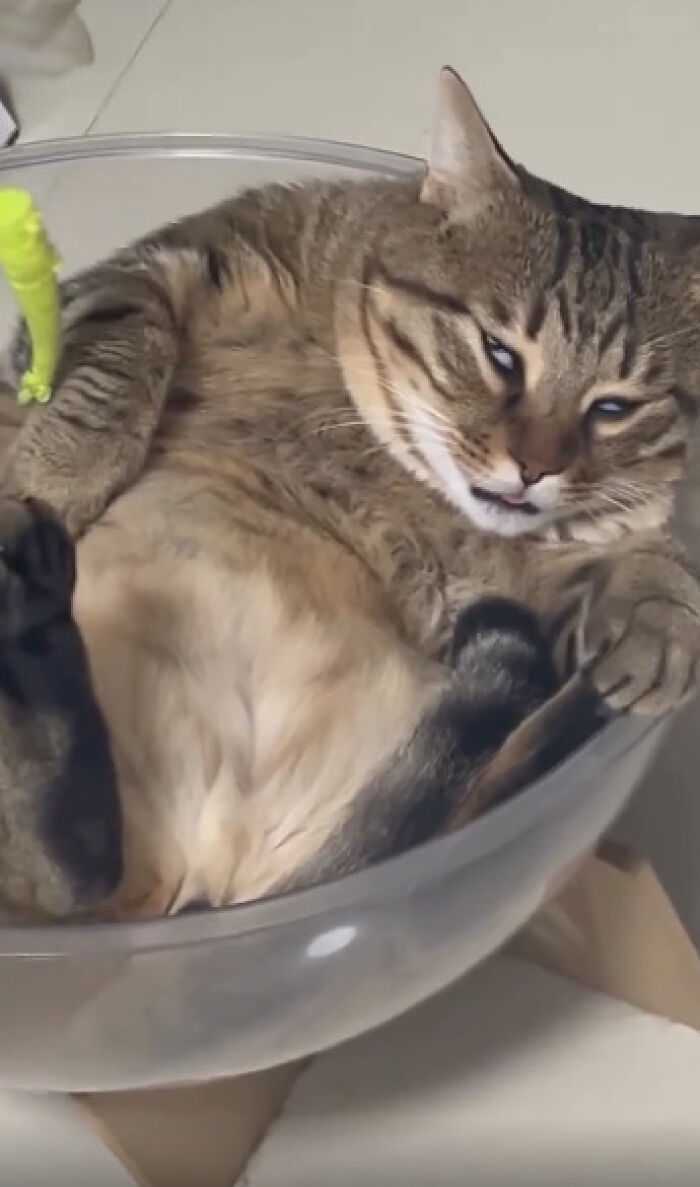
75. He’s not mad. He’s just temporarily possessed by a space entity.
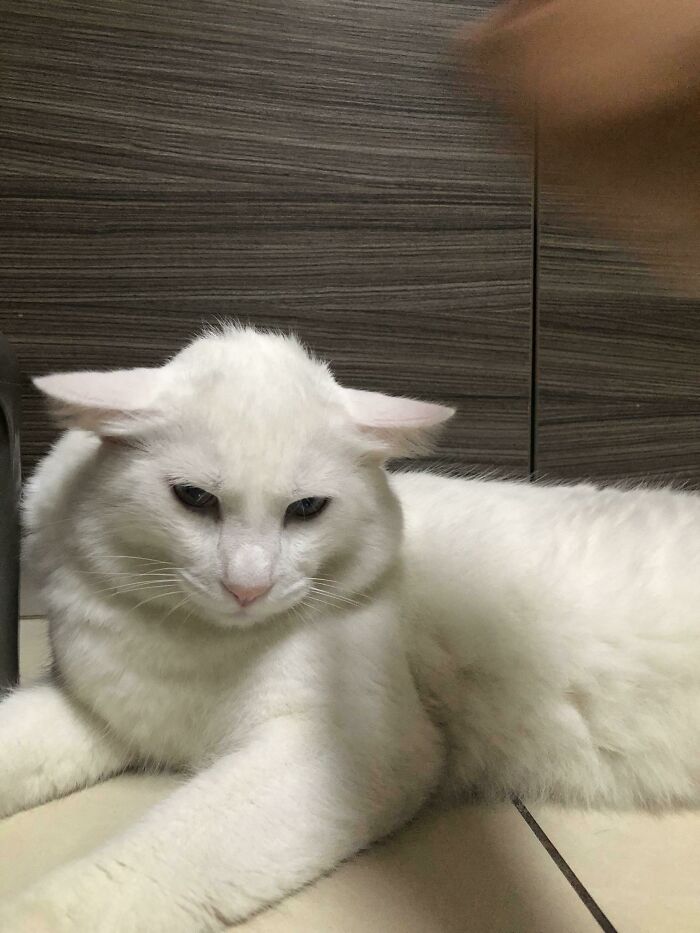
76. Wow!

77. Need we say more?

78. Boo!

79. He's a long boy.

80. She’s not mad. She’s just charging her laser vision.

So, are cats aliens? Probably not. But they’re definitely acting like invasive space invaders with a taste for birds and small mammals. Whether they’re knocking things off shelves, staring into the void, or casually destroying ecosystems, cats are endlessly fascinating.
They might not be extra-terrestrial, but they sure act like they’re on a secret mission. And if they ever do reveal their true alien forms, we’ll probably still feed them treats and let them nap on our keyboards.
Building Healthier Patterns
Understanding the intricate relationship between cats and humans is essential to navigating their seemingly alien behavior. Experts like Dr. Daniel Goleman, an emotional intelligence expert, assert, "Understanding the emotional needs of our pets can significantly enhance our bond with them." Additionally, Dr. John Gray, a relationship author, emphasizes the importance of recognizing and respecting their natural instincts, stating, "Just as in human relationships, understanding and communication are key to a harmonious connection."
By creating enriching environments, establishing routines, and understanding feline communication, owners can foster a deeper bond with their cats. These efforts can transform our perception of cats from mysterious beings into cherished companions, enhancing the quality of life for both pets and their owners.
